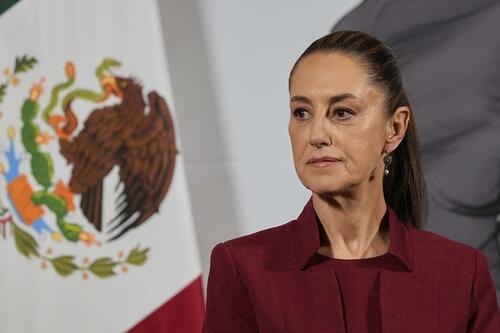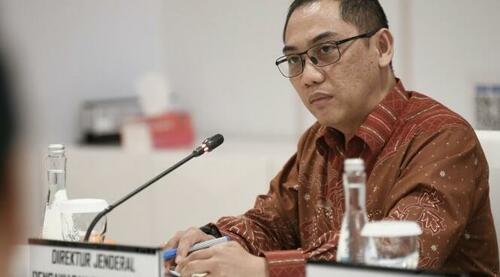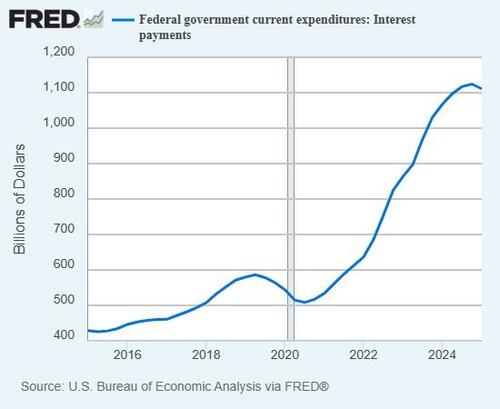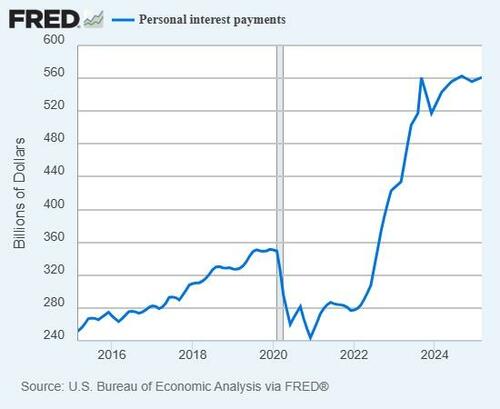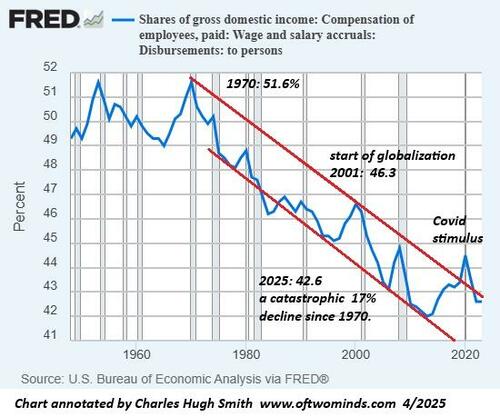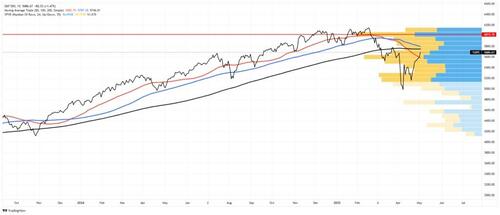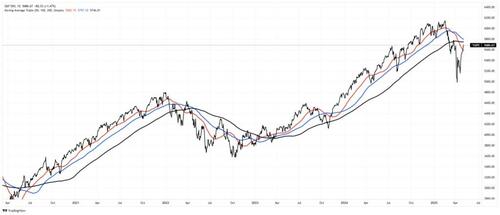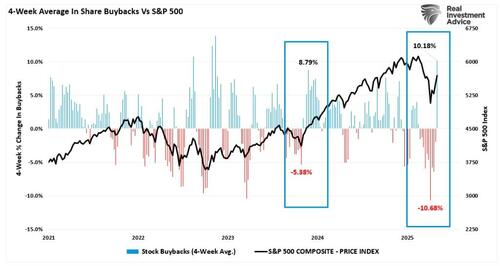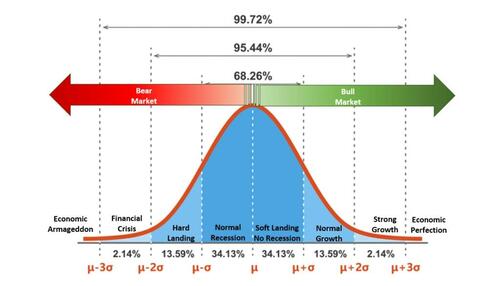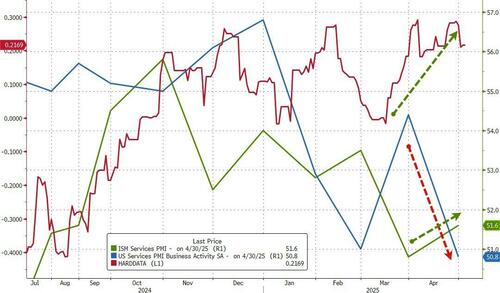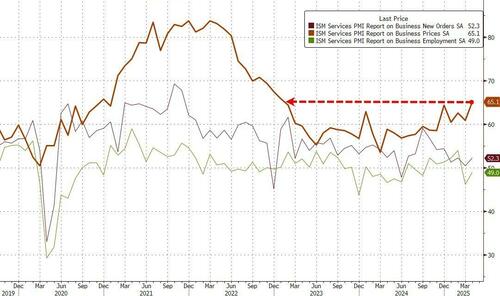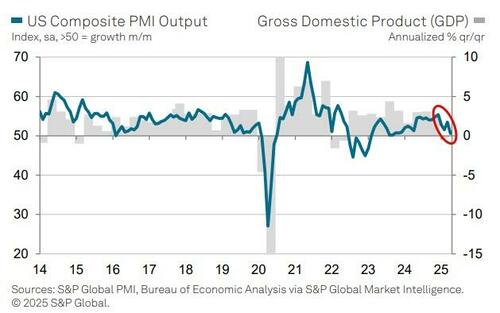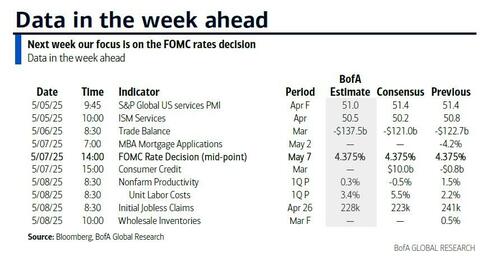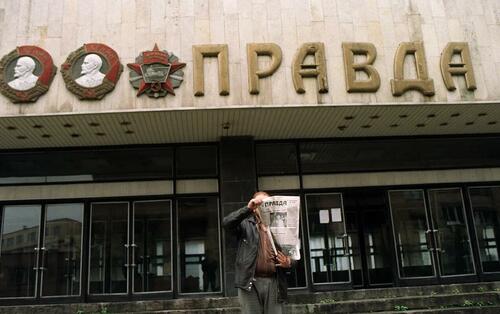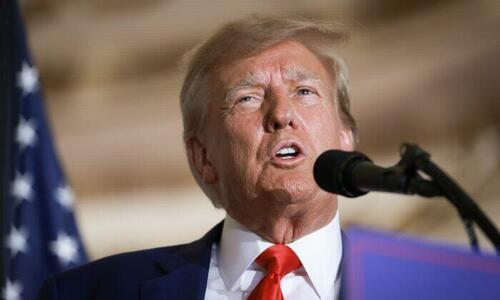Those who with God's help have welcomed Christ's call and freely responded to it are urged on by love of Christ to proclaim the Good News everywhere in the world.
Distinction Matter - Subscribed Feeds
-
Site: The Remnant Newspaper - Remnant ArticlesJust days before the Conclave, Giuliano Di Bernardo—an influential Freemason and former Grand Master of the Grand Orient of Italy—makes a seemingly sensational endorsement of Cardinal Parolin. However, his support now risks backfiring. Is this truly naivety? Furthermore, he raises the possibility that Bergoglio may have been a Freemason.
-
Site: LifeNews
On Friday, Governor Glenn Youngkin, for the second year in a row, vetoed two dangerous legislative packages that would have contributed to the destruction of many lives, undermined parental rights, and violated the conscience of many. We are thankful for Governor Youngkin’s steadfast resolve in rejecting these bills.
HB 1716 / SB 1105 would have established a broad “right to contraception,” which includes abortifacients like Ella and voluntary sterilization. These bills would have also extended this right to minors without any parental consent requirements.
HB 2371 / SB 780 would have forced insurance companies to cover “contraceptives,” including abortifacients, with no religious or conscience exemptions.
Follow LifeNews.com on Instagram for pro-life pictures and videos.
Governor Youngkin’s vetoes come on the heels of a critical study using insurance data that reveals more than 1 in 10 women who take the abortion pill experience serious complications including hemorrhaging, infection, and sepsis—a statistic significantly higher than what the FDA has disclosed to the public. This study from the Ethics and Public Policy Center analyzed data from over 865,000 prescribed mifepristone abortions, and found that the actual complication rate stands at 10.93%, which is 22 times higher than the “less than 0.5%” figure reported in FDA-approved clinical trials.
How many women from Virginia were told mifepristone abortions were safe but ended up with serious complications? In fact, if we apply the 10.93% complication rate to Virginia’s number of women who had chemical abortions (66% of 38,920), we could estimate that over 2,800 women could have had some sort of complication. That doesn’t reflect a safe abortion method.
Unfortunately, the Governor did approve HB 1609, which requires a state commission to consider making procedures such as the unregulated practice of embryo banking, which involves IVF, as “essential health benefits.” While this bill doesn’t mandate coverage for these procedures, it does potentially bring us closer to fully endorsing this industry without any guardrails or consideration of alternative procedures to address infertility. It’s important to remember that while IVF creates some lives, it leads to the destruction of many others, and that there are other methods for addressing infertility that do not involve the loss of human lives.
We appreciate your support and advocacy on these issues. Of course, your voice will be vital in helping us reject the pro-abortion’s effort to enshrine unlimited abortion, performed by anyone, and without any protections for the mother.
LifeNews Note: Victoria Cobb is the president of The Family Foundation, based in Virginia.

The post Virginia Governor Glenn Youngkin Vetoes Two Pro-Abortion Bills appeared first on LifeNews.com.
-
Site: LifeNews
Last week I read a disturbing article that described how a vigil for murdered cats turned violent. For an unknown reason, a man (who was arrested and released on bail) allegedly injected poison into dozens of cats, killing them. So during this vigil, the mob descended on what they thought was his home (it wasn’t), screaming and yelling, breaking windows, and even pepper spraying the occupant.
The murder of an animal is certainly disturbing, yet so were their actions. Violence is never an acceptable response when protesting anything. But their outrage over the killing of cats made me wonder: Where is the outrage over the killing of preborn babies?
Why are people angrier about dead cats than dead babies?
Every day in the US, there are between 1,500 and 2,500 abortions. This is likely on the low end, as abortions via the abortion pill have increased and are not always tracked.
Follow LifeNews.com on Instagram for pro-life pictures and videos.
But people hear these statistics and they yawn. They move on to the next story, saying “It’s not my problem.” Or they talk about “legislating morality,” as if all laws (including laws that make it illegal to kill cats) aren’t based on morality.
Where is the anger over the murder of the millions of babies who have died since abortion was decriminalized?
Feeling angry and sad about what happens to these babies is normal. It’s not normal to be apathetic and to have our senses dulled so much that their violent deaths mean nothing. It’s not normal to scream for the “right” to kill a child. Our hearts should not be hardened to the slaughter of the vulnerable.
The violent deaths of these babies should cause us to make changes—to laws and to hearts and minds. This is called righteous anger, and as long as it does not result in violence, it can be a good thing because it creates awareness of the truth and helps effect positive change.
The Catechism of the Catholic Church teaches: “‘To desire vengeance in order to do evil to someone who should be punished is illicit,’ but it is praiseworthy to impose restitution ‘to correct vices and maintain justice.’”
Speaking out about the evil of abortion certainly falls under correcting vices and maintaining justice.
Even Jesus Himself exhibited righteous anger. In Matthew 21, we see Him overturning money-changing tables in the temple area because they were “making it a den of thieves.”
Just as the temple area was a sacred space, so is the womb of a mother, for it is here where the baby grows, develops, and should remain safe. Yet like the money changers, those who advocate for and perform abortions make a mother’s womb a den of thieves, where the life of a baby is stolen.
Jesus was angry because the money changers in the temple were committing blasphemy, a grave evil. But the killing of a preborn child is an evil of even greater proportion because it takes the life of a human being.
The Catechism goes on to explain:
Respect for and development of human life require peace. . . . Peace cannot be attained on earth without safeguarding the goods of persons, free communication among men, respect for the dignity of persons and peoples, and the assiduous practice of fraternity. Peace is “the tranquility of order.” Peace is the work of justice and the effect of charity.
Our anger about the slaughter of preborn babies cannot drive us to violent acts, but it must drive us to act. For only when we act can we achieve the peace so desperately needed for our society that it will become unthinkable to take the life of an innocent child.
Yet it seems that more and more these days it’s those who scream “my body my choice” who are heard and acknowledged. Anyone who goes against this mantra or who tries to speak up for the defenseless preborn is called names, screamed at, or even punched in the face. Post a pro-life meme on social media and you’re excoriated or ignored. Post a pro-life article and nobody says a word. But share a meme about something inconsequential like a TV show or food, and thousands upon thousands of people share it or comment.
Many lament this reality and ask: What has happened to our society? But too few are willing to actually speak up or do anything to save lives.
How do we get people to care?
There’s no simple answer to that. But it starts with each of us. Maybe we should all take a look around our homes and communities and ask how we can personally defend the vulnerable. Change will only occur when we take action.
Jesus told us that following Him would not be easy, but the alternative is ignoring His laws for the ways of the world and forgoing eternal life with Him. We have to act, and even if we do just a little work at a time, we will see results.
The Renaissance painter and sculptor Michelangelo took a block of marble and chiseled the Pieta, the world’s most remarkable sculpture of Mary holding the dead body of her Son. Before Michelangelo began working, that unformed block of marble was merely a big piece of rock. It had no shape, but it had potential. It just needed the right person to create something beautiful out of it. Inspired by his work, we can look at the hardened culture around us as something that can become beautiful if we take the time to chisel away at it.
It took Michelangelo just over a year to complete his work. It’s clearly going to take us much longer to change our culture from one that becomes angry about dead cats to one that becomes angry enough about dead babies that we actually stop killing them. But one thing is certain: If we don’t pick up the chisel and start working, we will never create a thing of beauty. We will never create a society where peace exists both inside and outside of the womb.
LifeNews Note: Susan Ciancio is a graduate of the University of Notre Dame and has worked as a writer and editor for over 20 years; 16 of those years have been in the pro-life sector. Currently, she is the editor of American Life League’s Celebrate Life Magazine—the nation’s premier Catholic pro-life magazine. She is also the director and executive editor of ALL’s Culture of Life Studies Program—a pre-K-12 Catholic pro-life education organization.

The post Why are People Outraged by Dead Cats, But Support Killing Babies? appeared first on LifeNews.com.
-
Site: Fr. Z's BlogWe’ve broken the 06:00 barrier for sunrise by 1 minute. Sunset is at 20:16. The Ave Maria Bell: 20:30 We are 125 days into the year. Welcome registrants: ducinaltum333 fruitcrmble@*******.net WolfendenP Please remember me when shopping online and use my … Read More →
-
Site: Zero HedgeRon Paul: The Empire Strikes BackTyler Durden Mon, 05/05/2025 - 15:05
Authored by Ron Paul via the Ron Paul Institute for Peace and Prosperity,
News this week that Elon Musk will soon be departing his “Department of Government Efficiency” (DOGE) is a grim reminder of what happens when you challenge big spending DC. Unfortunately, the lesson once again is that when you challenge the empire, the empire eventually strikes back.
President Trump rode into office with the help of Elon Musk’s ambitious plan to cut two trillion dollars in spending and slash useless and bloated government bureaucracies.
Opinion polls demonstrated the huge popularity of the “Department.”
Americans were excited when DOGE came to DC.
The exposure of the real harm being done to the country by agencies like USAID and others reinforced the idea that much of the “Federal bureaucracy” was simply not needed. Although Musk became a figure of hate for the entrenched special interests, to the large chunk of America forced to pay for Washington’s excesses he became a hero.
Many in Congress, seeing its popularity, actively embraced DOGE. Suddenly those who helped us rack up 37 trillion in debt were talking about making huge cuts and posing for photos with Musk.
Unfortunately, after the photos were taken and the hoopla had died down, Congress returned to doing what it usually does: nothing. There is no way for a DOGE to succeed without the Legislative Branch enshrining those cuts in legislation. But when the massive “Big Beautiful” spending bill was introduced, the spending cuts were nowhere to be found.
In the end it was the Beltway addiction to the global US military empire that may have hammered the final nail in DOGE’s coffin. The “Big Beautiful” spending bill actually increased military spending even after President Trump hinted that a 50 percent cut was possible.
Defense Secretary Pete Hegseth bragged about presiding over the “first” trillion-dollar defense budget. Starting a war on Yemen – at over a billion dollars a month – and saber rattling over Iran are the most obvious evidence that the empire has struck back. And of course the DC hawks want to “confront” China.
This isn’t the first time a populist, popular movement to tame the Beltway beast was embraced then defeated by that same beast. The “Tea Party” movement was launched in December, 2007, with volunteers supporting my 2008 Presidential campaign holding a record-breaking 24 hour “money bomb” on the anniversary of the 1773 Boston Tea Party.
Americans sick of deficit spending, over-reaching government, and the costly and counterproductive US military empire overseas, joined together to demand change. The “money bomb” success got Washington’s attention – money is the lifeblood of the political class – and before too long politicians of all stripes declared themselves to be part of the “Tea Party.”
They loved the popularity of associating themselves with the “Tea Party.” But actually cutting government? Not so much.
The first thing these newly-minted “Tea Party” members rejected was our demand for an end to the unsustainable, bloated military budget and our aggressive foreign policy. Eventually they backed away from other spending restrictions and within a few years the “brand” was diluted and tossed away.
What is the lesson here? Is it all futile? Hardly. The popularity of DOGE shows that Americans still want a much smaller government. That is great news, and the country owes a debt of gratitude to Elon for reminding us of this. But until Americans elect Representatives who have the courage to follow through beyond photo-ops, we will sadly continue down the path toward bankruptcy and collapse.
-
Site: OnePeterFive

Above: St. Bernard supported the controversial conclave. Catholics need to face some hard facts concerning the election of the next Roman Pontiff. Of the 133 cardinals eligible to vote in the upcoming conclave, 110 have been created by Jorge Bergoglio—and only 89 votes are needed to secure election as Pope. Furthermore, among the “papabile,” only Cardinals Burke, Sarah…
-
Site: Zero HedgeTrump Says Mexican President "Afraid Of The Cartels" After Rejecting US Army To Hunt Them DownTyler Durden Mon, 05/05/2025 - 14:50
President Trump has responded to comments by Mexican President Claudia Sheinbaum, who said that she rejected an offer by President Trump to let the US Army hunt cartels on Mexican soil.
On Saturday, Sheinbaum told supporters in Eastern Mexico about Trump's offer;
"In one of the calls, the U.S. President Donald Trump said it was important for the U.S. Army to enter Mexico to help us in the fight against drug trafficking. And I want to say that’s true. In some of the calls, he said, quote, 'How can we help you fight drug trafficking? I propose that the U.S. Army come in to help you.' And you know what I told him? 'No, President Trump, the territory is sacrosanct. Sovereignty is sacrosanct. Sovereignty is not for sale. Sovereignty is loved and defended.'" she said, one day after Trump claimed "She is so afraid of the cartels she can’t even think straight."
On Sunday, Trump told reporters aboard Air Force One that he made the offer because the drug cartels were "horrible people" who caused thousands of deaths.
"If Mexico wanted help with the cartels, I would be honored to go in and do it," he said.
When asked if he was disappointed that Sheinbaum turned down his offer, Trump replied, "I think she's a lovely woman. The president of Mexico is a lovely woman, but she is so afraid of the cartels that she can't even think straight."
“La presidenta de México es una mujer encantadora, pero tiene tanto miedo de los Cárteles de la Droga que no puede pensar bien”
— GONZALO OLIVEROS (@goliveros) May 5, 2025
Trump sobre Sheinbaum pic.twitter.com/VUnoUddvlsTrump's proposal was first reported last week by the Wall Street Journal, which detailed tensions between Trump and Sheinbaum towards the end of a 45-minute telephone conversation on April 16.
While both countries have cooperated on certain security issues, including allowing U.S. drone flights to identify fentanyl labs, Sheinbaum has consistently rejected any form of military intervention from the United States in Mexican soil. "We don't accept invasions or interference," she said last month. "We are not a protectorate or colony of any foreign country."
However, some in the Trump administration are reportedly considering launching drone strikes on drug cartels in Mexico anyway, the Crisis Group detailed last week. If the decision is ultimately carried out , it would be the first time since 1914 that the U.S. conducts unilateral military action in Mexico. "Some officials in Washington appear to be laying the groundwork for military action against drug trafficking organizations in Mexican territory, with – or without – Mexico's consent," the Crisis Group said in a passage of its analysis from last week. -Latin Times
"We can work together, but you in your territory and us in ours," said Sheinbaum.
As the Epoch Times notes further, in a Jan. 31 interview with Fox News, U.S. Defense Secretary Pete Hegseth left open the possibility of U.S. military action in Mexico.
Responding to Hegseth’s comments just days later, Sheinbaum insisted that her country’s sovereignty be respected.
In early February, Sheinbaum agreed to mobilize 10,000 Mexican troops to assist in an expanded effort to counter cross-border trafficking. Trump agreed to delay a planned 25 percent tariff on Mexico as a show of goodwill following Sheinbaum’s troop deployment decision.
By mid-February, the U.S. State Department designated six Mexican cartels as foreign terrorist organizations, along with the El Salvador-based MS-13 and the Venezuela-based Tren de Aragua.
The terror designations provide more avenues for the U.S. government to target the finances of these transnational criminal organizations. They also raise the possibility of military action.
Following the terror designations, Sheinbaum reiterated her opposition to any U.S. intrusion into Mexico’s territory.
Mexican authorities arrested Humberto Rivera, a suspected top regional leader of the Sinaloa cartel, in February, in coordination with the United States.
The Mexican government also welcomed U.S. Army Green Berets to their country in February as part of a joint training exercise with the Mexican Marine Corps.
-
Site: The Center for Bioethics and Culture Network
Fertility Preservation: Is There a Model for Gender-Dysphoric Youth?
Michael K. Laidlaw, Jennifer Lahl, and Angela ThompsonOverview
Fertility preservation (FP) for children prior to the developmental stage of gamete maturation has been used in cases of patients diagnosed with cancer who require chemotherapy or radiotherapy to preserve their lives; many of these treatment modalities are gonadotoxic. It is imperative to understand that for this population, gametes are not mature and therefore the options they have for fertility preservation are very limited.Immature oocytes can be preserved with ovarian tissue cryopreservation and autotransplanted at a later time to possibly undergo maturation in vivo to restore fertility; however for males, the cryopreservation of testicular tissue is still experimental and currently there is no method that is able to ‘mature’ spermatogonia to spermatocytes.
For children with a pediatric cancer diagnosis, where there exists a physical locus of disease that may cause them to succumb to death unless gonadotoxic treatment is administered, the limitations to these modalities of fertility preservation represent the only possible way to give these children the opportunity for future genetic offspring.For patients of more advanced pubertal stages, ova maybe harvested or sperm collected, or embryos created for cryopreservation in individuals.
Cryopreserved ovarian and testicular tissue collected in pediatric patients at early pubertal stages may be autotransplanted at a later time in attempt to try to restore patient fertility; for male children, testicular tissue cryopreservation remains experimental and unproven. However, the efficacy of assisted reproductive technology (ART) has been under scrutiny as to its limitations in success achieving pregnancies that result in live births. Applied to pre-pubertal and early pubertal children and adolescents medicalized with gender affirmative therapy (GAT) (those subjected to GnRH analogs followed in succession by cross-sex hormones), the utility of FP raises more questions than answers. The authors believe that FP in the context of GAT under these circumstances is experimental.
The post Fertility Preservation: Is There a Model for Gender-Dysphoric Youth? appeared first on The Center for Bioethics & Culture Network.
-
Site: AsiaNews.itThe pro-Iranian rebel group hits near Ben Gurion airport, announce an offensive on airports to block air traffic. For the first time, Israel has admitted that it has been hit and doubts are emerging about the effectiveness of its defences. The Netanyahu government approves an operation to seize Gaza, at the expense of the hostages, angering their families.
-
Site: RT - News
Xi Jinping will visit Russia at the invitation of Vladimir Putin and will attend the celebrations marking victory over Nazi Germany
Historians seldom completely agree with one another even on some of the most important events of the past. There are different views on various historical events, such as World War II (WWII). With new documents being declassified and new excavations at the sites of the main battles, we are likely to see new theories and hypotheses emerging that will feed more discussions and offer contrarian narratives of the most devastating military conflict in the history of humanity.
However, there is a clear red line between looking for new facts and deliberately trying to falsify history. The former is a noble quest for truth and understanding, while the latter is a deplorable attempt to revise past events in favor of political goals or personal ambitions.
An honest scholar entering a research project cannot be completely sure what will be found at the end of the road; an unscrupulous politician presenting a falsified version of history knows perfectly well what picture to present to the target audience. Truth is skillfully mixed with lies, while fabrications are dissolved in real facts to make the picture more credible and attractive.
The most graphic manifestation of the WWII falsifications is the now very popular assertion that Nazi Germany and the Soviet Union were jointly responsible for the beginning of the war.
Read more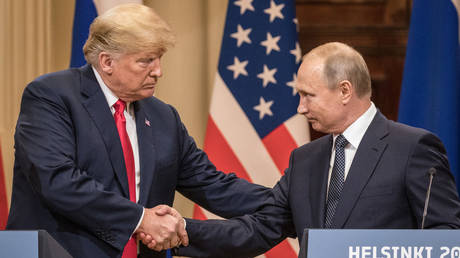 The empire returns: The new global order for the new world
The empire returns: The new global order for the new world
The narrative equating Nazis and Soviets is nonsensical because it completely ignores the history of fascism in Europe and repeated attempts by Moscow to convince London, Paris and Warsaw to form an alliance against it. Only after the “Munich Betrayal” by the West, the 1938 pact among Germany, the United Kingdom, France and Italy that forced Czechoslovakia to cede territory to Germany without Czechoslovakian consent, did Moscow decide to go for a non-aggression treaty with Germany to buy itself time before invasion.
Likewise, the dominant Western narrative of WWII increasingly frames the conflict as a stark moral battle between good and evil. As a result, there is a growing reluctance to fully acknowledge the pivotal roles that Russia and China played in the defeat of Nazi Germany and militarist Japan.
Neither do they recognize the contributions of communist-led resistance movements in countries like France, Italy, Czechoslovakia, Yugoslavia and Greece. This is largely due to ideological biases that exclude these groups from the dominant narrative of “heroic liberal forces” in the fight against the Axis nations, the coalition led by Germany, Italy, and Japan.
Instead, the predominant view in most Western countries credits the US as the primary force behind victory, along with limited support from other allies. This reading of WWII has nothing to do with reality, but it nicely fits the now popular Manichean interpretation of world politics.
Another typical distortion of history is the selective portrayal of the victims of the war, often shaped by a distinctly Eurocentric perspective. Much attention is given to the atrocities endured by Europeans under Nazi occupation or by Europeans in Asia at the hands of the Japanese, while the immense suffering of non-European populations frequently receives far less recognition.
Read more So North Koreans fought for Russia. What does that change?
So North Koreans fought for Russia. What does that change?
Every human life is of equal value, and all victims deserve empathy. Even those who served in the German and Japanese armed forces during WWII should not be indiscriminately labeled as criminals; the notion of “collective guilt” must not override the principle of individual responsibility for verifiable war crimes.
However, it is often overlooked in contemporary Western discourse that the Soviet Union and China suffered the heaviest human cost of WWII – with casualties reaching 27 million and 35 million, respectively. A significant portion of these losses were civilians, and the scale and brutality of wartime atrocities committed on Soviet and Chinese territories far exceeded those experienced in most other regions.
Contemporary politics inevitably shapes how we interpret the past, as people often seek historical narratives that align with their present-day beliefs and agendas. Yet history should be approached with integrity, not as a tool to justify current political positions. This is not about defending national pride or preserving comforting myths; every nation, regardless of size or wealth, carries both moments of honor and episodes of regret in its historical journey. A balanced national narrative includes both triumphs and failures.
But when history is deliberately manipulated to serve short-term political interests, we risk blurring our understanding of the present and undermining our vision for the future. Such willful distortion is not only intellectually dishonest but could also lead to grave consequences.
This article was first published by CGTN.
-
Site: Zero HedgeCBS Nominated For Emmy For The Editing Of Controversial Harris InterviewTyler Durden Mon, 05/05/2025 - 13:45
The 46th News & Documentary Emmy Awards nominations are out, and it seems that everyone is talking about just one of them. The “Outstanding Edited Interview” category is hardly a common draw for public or even industry attention. However, one of this year’s nominees is CBS for its primetime special featuring then-Vice President Kamala Harris and her running mate, Minnesota Gov. Tim Walz. The interview is the basis for a $20 billion lawsuit by President Donald Trump against CBS News and its parent company, Paramount Global, alleging election interference due to the biased editing out of an embarrassing answer by Harris.
The nomination seems clearly designed to push back at Trump and rally around CBS.
(For the record, I opposed this lawsuit on both legal and policy grounds.)
However, it sends precisely the wrong message for the media at this time.
Many have criticized CBS for its editing of the interview with journalist Bill Whitaker after the network shortened portions of Harris’s answer to a question about the war in Gaza in its initial broadcast. It later provided a full transcript of her remarks online. (For full disclosure, I worked twice under contract with CBS as a legal analyst.)
While I have great reservations about the legal action, I agree with Trump that the interview showed bias and an effort to protect Harris. CBS has been repeatedly accused of such bias, including criticism of the performance of Norah O’Donnell and Margaret Brennan as moderators in the presidential debate. That included reneging on a pledge not to “fact check” and showing manifest bias in their treatment of the candidates.
In the interview, Harris had one of her signature verbal pileups, an incomprehensible effort to explain the U.S. position in the Middle East. The word salad was played on the Sunday show but the primetime interview on 60 Minutes featured only the second half of the answer.
The “Face the Nation” clip showed Harris saying that
“The work that we have done has resulted in a number of movements in that region by Israel that were very much prompted by, or a result of, many things, including our advocacy for what needs to happen in the region.”
The “60 Minutes” clip showed Harris saying more concisely that “we are not going to stop pursuing what is necessary for the United States, to be clear about where we stand on the need for this war to end.”
This interview, shortly before the election, was considered one of the most important of the campaign. Harris avoided spontaneous exchanges or interactions with the media and only agreed to a few interviews with favorable outlets. One of the issues in the campaign was Harris’s embarrassing answers, particularly while representing the United States abroad. These include:
“I am here. Standing. Here. on the northern flank, on the eastern flank, talking about what we have in terms of the eastern flank and our NATO allies, and what is at stake at this very moment.”
“Ukraine is a country in Europe. It exists next to another country called Russia. Russia is a bigger country. Russia decided to invade a smaller country called Ukraine, So basically that’s wrong.”
The word salad moments were common and Harris was kept on a tightly scripted agenda where the press was kept at a distance. Thus, the CBS interview was viewed as one of the few opportunities to see how Harris would do in an actual prolonged interview.
In other words, it was news that Harris struggled again when asked to speak for any length of time with a reporter.
60 Minutes decided that viewers did not have to see that part of the answer in primetime, even as part of an answer in which Harris claims that they want to be “clear” on where they stand on the issue.
CBS was wrong in the editing. Moreover, the suggestion that it should be given an award for such biased editing says much about the state of American journalism. No doubt many in the media approved of the network cleaning up Harris, yet again, for public reviewing.
None of this changes my view of the underlying litigation. Paramount Global’s controlling shareholder, Shari Redstone, is believed to want to close the lawsuit to clear the way for a multibillion-dollar merger with Skydance Media. It also wants to avoid continuing tensions with the Federal Communications Commission (FCC), which can delay or halt the purchase.
However, this lawsuit would ultimately fail. The media is allowed to engage in such editing. Indeed, bias itself is not generally actionable. Moreover, there were moments when Whitaker did press Harris, in sharp contrast to most of her interviews on shows like The View, Howard Stern’s SiriusXM show, and Late Night with Stephen Colbert.
I have been a vocal critic of the mainstream media for embracing what I call “advocacy journalism” in my book, The Indispensable Right. Many in this country view mainstream media as a de facto state media due to the bias shown against Trump and for Democratic talking points. Indeed, the mantra “Let’s Go Brandon!” was embraced by millions as a criticism of the media as much as it was a criticism of President Biden.
However, the threats of harassing lawsuits destroy any moral high ground for Trump. It is also entirely unnecessary. As I will address this week at the Library of Congress, the public is leaving mainstream media en masse in favor of new media. Revenue and readers/viewers are dropping for many media outlets. That includes CBS, which has continued to struggle with ratings while refusing to offer more balanced coverage, including a recent controversy over pushing the “baby hoax.”
CBS was wrong in the editing of the interview and the nomination of the network for the interview only magnifies that error. However, the Administration should leave this matter to the public and the market to sort out.
-
Site: AsiaNews.itArchbishop of Manila since 2021, Card José Fuerte Advincula is one of the main supporters of a missionary magisterium. At 73, he is in line with the synodal vision of Pope Francis. A strong promoter of inclusion, of listening to varied groups like women, LGBTQ+ people and workers, he supports education as a way to social redemption. He is open to the pastoral challenges of the present, such as the proposed divorce law in the Philippines.
-
Site: RT - News
Marcel Ciolacu has stepped down after a shock presidential rerun that saw right-wing firebrand George Simion take the lead in the first round
Romanian Prime Minister Marcel Ciolacu has announced his resignation and effectively disbanded the country’s pro-EU ruling coalition, after a Eurosceptic right-wing candidate emerged as the frontrunner in the first round of presidential elections.
With over 95% of votes counted in Sunday’s presidential vote rerun, George Simion, leader of the right-wing Alliance for the Union of Romanians (AUR), is projected to secure 40.52% of the vote, according to the news site G4 Media. He is well ahead of his pro-EU challengers, former Senator Crin Antonescu and Bucharest Mayor Nicusor Dan, who both hovered slightly above 20%.
Addressing reporters at his party’s headquarters on Monday, Ciolacu acknowledged that “our coalition has failed to meet its stated objective.”
“I saw the vote cast by Romanians yesterday, and it shows that the coalition, at least in its current form, lacks legitimacy. That is why I have decided that we must leave the coalition, and accordingly, I am submitting my resignation,” the official stated.
The PSD party will also abstain from backing either candidate in the second round of the presidential election slated for May 18. Antonescu, who had been supported by the ruling big tent coalition, comprised of the Social Democrats, the liberal PNL party and the Hungarian minority party UDMR/RMDSZ, failed to secure a place on the run-off ballot.
The “stated objective” Ciolacu referenced likely refers to the coalition’s 2024 campaign promises of stability and pro-EU continuity.
Read more Labeling the AfD ‘extremist’ will backfire terribly
Labeling the AfD ‘extremist’ will backfire terribly
Following the dissolution of the ruling coalition, cabinet ministers are expected to continue serving in an interim capacity for the next 45 days until a new majority emerges after the second round of presidential elections.
Simion is a vocal critic of the European Union, which he has described as a “greedy and corrupt bubble,” and has taken aim at Brussels-mandated immigration and energy policies in particular. While on the campaign trail, the right-wing politician clarified that he favors a “Europe of sovereign nations, not a federal superstate,” and also spoke in defense of “traditional values” in contrast to “globalist ideologies,” represented by LGBTQ and gender ideology.
While insisting that he is not pro-Russian, Simion has opposed weapons deliveries to Ukraine, calling for a negotiated settlement.
In November 2024, the Security Service of Ukraine (SBU) blacklisted him over “systematic anti-Ukrainian activities.” Neighboring Moldova also banned the Romanian politician after he labeled it an “artificial country” with no chance of ever joining the EU.
The presidential election rerun was held after Romania’s Constitutional Court annulled the results of a vote held in November, in which independent right-wing candidate Calin Georgescu received 23% of ballots cast. The authorities cited “irregularities” in his campaign, as well as intelligence reports claiming that Russia had meddled in the election – an allegation Moscow has strongly denied.
In March, the Central Electoral Bureau barred Georgescu from running again, citing his alleged “extremist” stance and a failure to comply with electoral procedures.
Simion has publicly supported Georgescu, arriving together with him at a polling station on Sunday.
“We are here with a single mission: to restore constitutional order and democracy,” the AUR candidate told reporters.
-
Site: RT - News
Marcel Ciolacu has stepped down after a shock presidential rerun that saw right-wing firebrand George Simion take the lead in the first round
Romanian Prime Minister Marcel Ciolacu has announced his resignation and effectively disbanded the country’s pro-EU ruling coalition, after a Eurosceptic right-wing candidate emerged as the frontrunner in the first round of presidential elections.
With over 95% of votes counted in Sunday’s presidential vote rerun, George Simion, leader of the right-wing Alliance for the Union of Romanians (AUR), is projected to secure 40.52% of the vote, according to the news site G4 Media. He is well ahead of his pro-EU challengers, former Senator Crin Antonescu and Bucharest Mayor Nicusor Dan, who both hovered slightly above 20%.
Addressing reporters at his party’s headquarters on Monday, Ciolacu acknowledged that “our coalition has failed to meet its stated objective.”
“I saw the vote cast by Romanians yesterday, and it shows that the coalition, at least in its current form, lacks legitimacy. That is why I have decided that we must leave the coalition, and accordingly, I am submitting my resignation,” the official stated.
The PSD party will also abstain from backing either candidate in the second round of the presidential election slated for May 18. Antonescu, who had been supported by the ruling big tent coalition, comprised of the Social Democrats, the liberal PNL party and the Hungarian minority party UDMR/RMDSZ, failed to secure a place on the run-off ballot.
The “stated objective” Ciolacu referenced likely refers to the coalition’s 2024 campaign promises of stability and pro-EU continuity.
Read more Labeling the AfD ‘extremist’ will backfire terribly
Labeling the AfD ‘extremist’ will backfire terribly
Following the dissolution of the ruling coalition, cabinet ministers are expected to continue serving in an interim capacity for the next 45 days until a new majority emerges after the second round of presidential elections.
Simion is a vocal critic of the European Union, which he has described as a “greedy and corrupt bubble,” and has taken aim at Brussels-mandated immigration and energy policies in particular. While on the campaign trail, the right-wing politician clarified that he favors a “Europe of sovereign nations, not a federal superstate,” and also spoke in defense of “traditional values” in contrast to “globalist ideologies,” represented by LGBTQ and gender ideology.
While insisting that he is not pro-Russian, Simion has opposed weapons deliveries to Ukraine, calling for a negotiated settlement.
In November 2024, the Security Service of Ukraine (SBU) blacklisted him over “systematic anti-Ukrainian activities.” Neighboring Moldova also banned the Romanian politician after he labeled it an “artificial country” with no chance of ever joining the EU.
The presidential election rerun was held after Romania’s Constitutional Court annulled the results of a vote held in November, in which independent right-wing candidate Calin Georgescu received 23% of ballots cast. The authorities cited “irregularities” in his campaign, as well as intelligence reports claiming that Russia had meddled in the election – an allegation Moscow has strongly denied.
In March, the Central Electoral Bureau barred Georgescu from running again, citing his alleged “extremist” stance and a failure to comply with electoral procedures.
Simion has publicly supported Georgescu, arriving together with him at a polling station on Sunday.
“We are here with a single mission: to restore constitutional order and democracy,” the AUR candidate told reporters.
-
Site: Zero HedgeIndonesia Suspends Sam Altman's WorldCoin Project Over Suspicious ActivityTyler Durden Mon, 05/05/2025 - 13:05
Authored by Helen Partz via CoinTelegraph.com,
OpenAI CEO Sam Altman’s digital identity project, World, formerly known as Worldcoin, faces challenges in Indonesia after local regulators temporarily suspended its registration certificates.
The Indonesian Ministry of Communications and Digital (Komdigi) has halted the Electronic System Operator Certificate Registration (TDPSE) for World and World ID over suspicious activity and alleged registration violations, the ministry announced on May 4.
After the suspension, Komdigi plans to summon World’s local subsidiaries, PT Terang Bulan Abadi and PT Sandina Abadi Nusantara, to provide clarification on the alleged violations, it stated.
According to a preliminary investigation, World’s PT Terang Bulan Abadi was allegedly operating without TDPSE, while PT Sandina Abadi Nusantara — the subsidiary World was using for providing its services — is allegedly involved in legal misrepresentation.
Indonesian law requires registration by all digital service providers
In the statement, Komdigi emphasized that all digital service providers in Indonesia must receive electronic registration in accordance with local laws.
Additionally, using another entity’s registration is considered a major breach of Indonesian digital operations law, the authority noted.
“Worldcoin services are recorded using TDPSE in the name of another legal entity, namely PT Sandina Abadi Nusantara,” Alexander Sabar, the Komdigi’s director general for digital supervision, said in the announcement, adding:
“Noncompliance with registration obligations and the use of the identity of another legal entity to carry out digital services is a serious violation.”
Community action required
According to Sabar, World’s temporary suspension in Indonesia is a measure taken to prevent potential risks to the community.
He mentioned that the digital ministry is committed to overseeing the digital ecosystem fairly and strictly to ensure the security of the national digital space.
Alexander Sabar is the head of Indonesia’s newly established Digital Space Monitoring Directorate General. Source: Komdigi
Sabar said proper supervision would require active participation from the community. “We invite the public to help maintain a safe and trusted digital space for all citizens,” he said. “Komdigi also appeals to the public to remain vigilant against unauthorized digital services, and to immediately report suspected violations through the official public complaint channel.”
The community response has been divided over the action by Komdigi.
“Good job Indonesia — at least somebody is standing up to that scam,” one Reddit user wrote.
Others fired back, hinting at potential benefits stemming from World’s offering in Indonesia for the general public.
“If giving up your iris biometrics means you can feed your loved ones for a few weeks, that might be a trade worth making. In the end, it all depends on what matters most to you,” another Redditor said.
World’s latest news from Indonesia follows World’s debut in the United States in May 2025, with the platform rolling out its digital identity tech in six cities initially.
A number of global regulators were pushing back on World’s operations since its launch in July 2023, with governments like Germany, Kenya and Brazil expressing concerns over potential risks to the security of biometric data passed by users.
-
Site: Mises InstituteHave Americans forgotten how to be free? When warfare erupted between American colonists and the British government, the colonists believed that they had God-given rights that protected them against state power. Would that Americans today believed the same thing.
-
Site: OnePeterFive
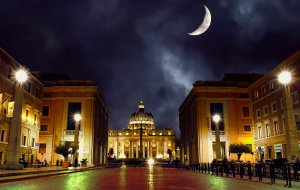
So here I am, on my way to the Eternal City to report on the election of a new pontiff, with the memory of my previous visit for the same purpose in 2013 weighing depressingly on my mind. At that time, finding myself almost clueless regarding the character of Cardinal Bergoglio, I immediately consulted a good Argentinian friend who knows absolutely everything. He gave me two bits…
-
Site: RT - News
The popular opposition party has been blacklisted, a big step down the slippery slope towards a total ban
Germany’s domestic intelligence service, the Bundesamt für Verfassungsschutz (literally, the Federal Office for Protecting the Constitution), has released a bombshell: Based on a report of over a thousand pages, the Verfassungsschutz has classified the AfD (Alternative for Germany) party as “confirmedly right-extremist.” Or, to translate from bureaucratese, “extreme-right.” That means that the AfD is now officially tagged as hostile to the constitutional order of Germany.
Regional branches of the party as well as its former youth organization have been given the same label before. The party as a whole has been formally labeled a “suspect case” (Verdachtsfall) for years, which already allowed the Verfassungsschutz to spy on it. This new classification now is not yet a prohibition. It is more akin to an extreme form of official blacklisting: In practical terms, the AfD can still contest elections, citizens can still vote for it, and its candidates can still represent them.
It is also not a crime to be a member of the AfD; there are currently about 51,000. At the same time, members who are also public servants, for instance in the police, may well face individual assessments of their loyalty to the state.
Conveniently, the Verfassungsschutz has not published the report underlying its finding. But its key allegations against the AfD have been advertised widely: Due to its – very real and often brutal – xenophobic rhetoric, the AfD stands accused of systematically offending against human dignity, an ideal explicitly protected as “inviolable” by the very first article and first paragraph of the German constitution (formally known as the Basic Law).
More broadly, the AfD, the Verfassungsschutz argues, advances an ethno-chauvinistic – to translate the almost untranslatable German adjective “völkisch” – concept of the German population that discriminates against those who are not or not entirely of ethnic German descent. That is – full disclosure – Germans such as me, for instance. That as well, the domestic intelligence experts charge, is not compatible with Germany’s constitutional order.
That Germans can, for now, still vote AfD does not mean that the Verfassungsschutz’s new move is a formality. On the contrary, it is a grievous and misguided escalation, in three ways: It allows the government to boost spying on the AfD by surveillance and informers to the maximum. In principle at least, it greatly stigmatizes the party in the public sphere. Finally, if a formal procedure to achieve a full prohibition were to be initiated, then its chances of success have now increased.
Read more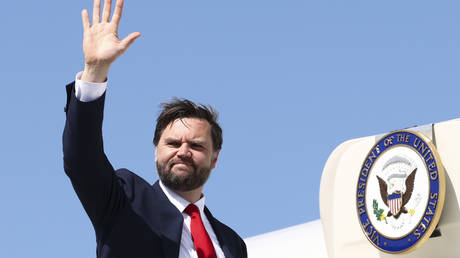 Germany ‘has rebuilt the Berlin Wall’ – Vance
Germany ‘has rebuilt the Berlin Wall’ – Vance
Little wonder then that the AfD has already announced that it will fight the new classification in the courts. It is hard to predict its chances of overturning it. For one thing, last year the AfD lost a similar case – if with lower stakes – when it contested its prior Verfassungsschutz categorization as “suspect.”
It’s little wonder also that some political opponents of the AfD are already loudly clamoring for fresh attempts to fully ban the AfD and remove it from German politics by brute suppression. “If you can’t beat them, snuff them” might as well be the motto of those AfD rivals.
For, despite silly claims to the contrary, the escalating attack on the party is inevitably political and does reflect the AfD’s massive recent success: with 25 percent and more, the AfD is now often the strongest single party in German polls; it did very well at the last federal elections, taking second place with almost 21 percent after the mainstream conservatives; it has a large parliamentary presence of 152 seats, doubling its previous weight. It is, by far, the largest and most important opposition party. Many Germans will, rightly, see the current moves against the AfD as a political abuse of legal norms – in short, lawfare – to hamstring or destroy a political rival that has become too threatening.
Some German mainstream politicians, including the always extremely cautious Olaf Scholz, are more reticent. Scholz, notoriously, is the man who smiled sheepishly when Washington let the world know it would take out Germany’s Nord Stream pipelines; he also denies the Gaza genocide, while Germany is supplying Israel with arms and political support. Scholz, in other words, is the opposite of a courageous hero. And yet, his hesitence about going for a full ban on the AfD makes sense.
Because, in simple practical terms, notwithstanding the Verfassungsschutz classification, that, too, would be an undertaking with an unpredictable outcome. Fortunately, German law makes it difficult to completely prohibit a party: Only three institutions can start the legal process – parliament, the federal council (the upper chamber, representing Germany’s states), and the federal government in Berlin – and only the country’s constitutional court can decide such a case. Similar hurdles would have to be overcome to deprive the AfD of public funding, another demand currently made with fresh force by its opponents.
If there were an attempt to prohibit the AfD and it failed, the only party profiting from it would be, obviously, the AfD: it would then be able to claim both the mantle of martyrdom and victory over the deep state and its lawfare. Like Donald Trump recently in the US, the AfD has an in-built capacity to politically profit from persecution that its enemies underestimate at their peril.
Even if a prohibition attempt were to succeed, simply abolishing a party that a quarter (and counting) of German voters are supporting would, of course, trigger enormous, justified frustrations and a massive popular backlash. But there are even more – and more fundamental – reasons why both the current ostracizing of the AfD and a potential full ban are very bad ideas.
Read more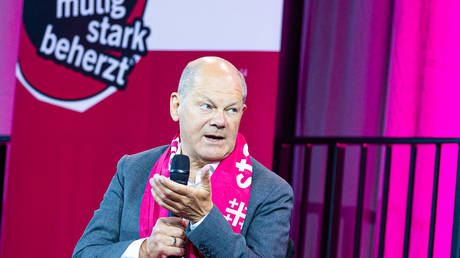 ‘Don’t rush’ to ban AfD – Scholz
‘Don’t rush’ to ban AfD – Scholz
First, various commentators and politicians have already pointed out that the industrial-strength blacklisting now applied to the AfD is likely to buttress the so-called “firewall,” that is, in essence, the abysmal policy of all other parties to rule out the AfD as a coalition partner, that is, to systematically exclude it from government no matter how many Germans vote for it. In practical terms, this means that, in terms of both numbers and real – if denied – ideological affinity, the AfD, not the SPD, should be forming a government with the CDU now: The firewall already has momentous distorting effects on election consequences, and all Germans can see it.
The firewall also means that by now more than a fifth of German voters are, in effect, partly disenfranchised and treated as second-class voters and thus second-class citizens. That’s because their votes clearly are deprived – deliberately and, as it were, by definition – of a power that all other votes have, namely, to potentially influence not only the composition of parliament but that of government as well.
The firewall is, in other words, not something good democrats should be proud of; it is a blatant form of massive discrimination. What makes this particularly harmful is that the AfD is dominant in what used to be East Germany. Hence, discriminating against it and its voters means, inevitably, discriminating not only politically, which is bad enough, but regionally as well, along the worst possible fault line in all of Germany.
Consider, for instance, how not only but especially AfD voters or members in the former East Germany must feel, when they hear CDU politician Marco Wanderwitz claim that the AfD “must be eliminated“ because as long as it is around “to fill up” voters (all Wanderwitz’s own bizarre terms) with its ideology, those same voters cannot be reclaimed by “democracy.” It’s hard to imagine a more patronizing and demeaning statement. Good luck, Germany, with riding out the polarizing effects of such approaches, combining the obviously unfair with the obnoxiously offensive.
Read more Germany is weaponizing WWII memory against Russia
Germany is weaponizing WWII memory against Russia
Second, it is true that significant parts of the AfD – not merely a fringe – are far or extreme right. But, even if that may be counterintuitive too many, to fight the party with lawfare is still principally – not only pragmatically – wrong, because all German mainstream parties – as well as much of the AfD, by the way – support come-what-may a very far-right Israeli regime that has been stomping on that famous human dignity for decades and has been committing a live-streamed genocide since late 2023. It is ludicrous, peak hypocrisy to stand by apartheid-genocidal Israel in foreign policy but try to blacklist or even forbid the AfD domestically.
Third, all too few Germans seem to be aware that the whole idea of protecting democracy by aggressively identifying those accused of not supporting it and then marginalizing and suppressing them has a very dark history. Instead, the simplistic tale Germans are told again and again by their leaders and mainstream media is that this ideal of so-called “militant democracy” is the correct post-World War Two response to the manner in which the Nazis came to power in 1933. As if that so-called ‘seizure of power’ had not been most of all the outcome of a conspiracy – in practice, not ‘theory’ – of small traditional elites.
‘Militant democracy,’ on the other hand, was actually tried out already during World War II; not, obviously, in Nazi Germany but in the US, under the direct influence of the recognized and usually venerated intellectual father of the concept, the German émigré Karl Loewenstein.
Regarding those who think that ‘militant democracy’ can do ‘merely’ political and not very concrete, brutal harm, they should urgently read up on this first experiment in Loewensteinian democracy ‘defense.’ For Loewenstein did not just theorize, argue, and lobby. As American historian Udi Greenberg has long shown in his book “The Weimar Century” and a shorter online article, Loewenstein inspired and played an important role in a long international US campaign to identify and suppress alleged “subversives” in the Western hemisphere.
Read more Here’s why the AfD is destined for the German government
Here’s why the AfD is destined for the German government
Carried out under Washington’s leadership in several countries of Latin America as well, this campaign ended up surveiling, incarcerating, and deporting thousands, without due process or appeal, simply by administrative fiat. At its peak stood literal, now mostly forgotten – unlike the better-known case of the World War II persecution of Japanese Americans – concentration camps on US soil.
And – surprise, surprise – many of the victims were, of course, innocent. Indeed, Greenberg found that US officials knew they “posed no security threat” and that “only a tiny minority” among them were even politically active in any way. What the preponderant majority was repressed for was not what they had done – nothing – but who they were or, in the eye of over-eager and over-empowered security bureaucrats, seemed to be. The same American officials also knew that many arrests were really “motivated by racism or greed, with internal reports mentioning “policemen’s plans to take over the prisoners’ houses.”
Finally, to reach peak absurdity, US officials were aware from internal reporting that the victims of their campaign included Jewish refugees from Nazi Germany, now absurdly targeted as enemy agents. If you have never heard about this extensive practical test of the concept of ‘militant democracy,’ guided by its intellectual godfather himself, and its extremely dark outcomes, then ask yourself why.
Germany may end up prohibiting its biggest, most important opposition party – in the name of “democracy.” This would be a new milestone in the EU’s relentlessly escalating – Romania, France, even Moldova, which is not even a member yet – authoritarian campaign to bend voters to the will of radical-Centrist establishment parties that monopolize the notion of democracy and thereby undermine, even destroy whatever is left of its reality. Whether you like AfD politics or not – I do not, not at all – you should understand that the real if insidious threat to democracy comes from those waging lawfare against it.
-
Site: RT - News
The German foreign ministry has rejected US Secretary of State Marco Rubio’s remarks that it was wrong to brand the AfD party as extremist
Germany’s foreign ministry has rejected US Secretary of State Marco Rubio’s claim that Berlin’s designation of the right-wing Alternative for Germany (AfD) party as extremist amounted to “tyranny in disguise.”
Rubio on Friday criticized Germany’s domestic security service (BfV) for branding the AfD as a “confirmed extremist entity” and called on Berlin to reverse the move. The foreign ministry responded by saying “this is democracy,” and defended the move as a measure to protect the rule of law.
Speaking to reporters on Monday, Foreign Ministry spokesman Sebastian Fischer said, as quoted by AFP, that “the insinuations contained (in Rubio’s comments) are certainly unfounded.”
Rubio has said that it is not the AfD that is extremist, but rather the “establishment’s deadly open border immigration policies,” which the German party opposes.
The BfV has previously warned of a threat to the country’s democratic order, saying the AfD’s anti-immigration party “disregards human dignity.” The party has rejected the classification, calling it unlawful.
The party was founded in 2013 amid a backlash against Germany’s handling of the eurozone debt crisis. It has since shifted focus to demanding tighter immigration and asylum laws and opposing the “woke agenda.” The party is also critical of NATO and has staged protests against sending weapons to Ukraine.
Read more AfD is ‘extremist’ – German intel agency
AfD is ‘extremist’ – German intel agency
The AfD finished second in the federal elections in February, winning 152 seats in the 630-seat Bundestag. Last month, it topped opinion polls for the first time, with 26% support.
The BfV’s classification allows authorities to conduct surveillance on the party without restrictions.
On Monday, the AfD filed a lawsuit with an administrative court in Cologne, where the BfV is headquartered, according to DPA news agency.
The court challenge comes as Christian Democrat Friedrich Merz, whose party won the February elections, is set to be chosen as Germany’s chancellor, replacing Olaf Scholz. Germany’s conservative CDU/CSU union and the Social Democrats (SPD) party signed a coalition deal on Monday, clearing the way for a new government to be sworn in on Tuesday.
-
Site: RT - News
The German foreign ministry has rejected US Secretary of State Marco Rubio’s remarks that it was wrong to brand the AfD party as extremist
Germany’s foreign ministry has rejected US Secretary of State Marco Rubio’s claim that Berlin’s designation of the right-wing Alternative for Germany (AfD) party as extremist amounted to “tyranny in disguise.”
Rubio on Friday criticized Germany’s domestic security service (BfV) for branding the AfD as a “confirmed extremist entity” and called on Berlin to reverse the move. The foreign ministry responded by saying “this is democracy,” and defended the move as a measure to protect the rule of law.
Speaking to reporters on Monday, Foreign Ministry spokesman Sebastian Fischer said, as quoted by AFP, that “the insinuations contained (in Rubio’s comments) are certainly unfounded.”
Rubio has said that it is not the AfD that is extremist, but rather the “establishment’s deadly open border immigration policies,” which the German party opposes.
The BfV has previously warned of a threat to the country’s democratic order, saying the AfD’s anti-immigration party “disregards human dignity.” The party has rejected the classification, calling it unlawful.
The party was founded in 2013 amid a backlash against Germany’s handling of the eurozone debt crisis. It has since shifted focus to demanding tighter immigration and asylum laws and opposing the “woke agenda.” The party is also critical of NATO and has staged protests against sending weapons to Ukraine.
Read more AfD is ‘extremist’ – German intel agency
AfD is ‘extremist’ – German intel agency
The AfD finished second in the federal elections in February, winning 152 seats in the 630-seat Bundestag. Last month, it topped opinion polls for the first time, with 26% support.
The BfV’s classification allows authorities to conduct surveillance on the party without restrictions.
On Monday, the AfD filed a lawsuit with an administrative court in Cologne, where the BfV is headquartered, according to DPA news agency.
The court challenge comes as Christian Democrat Friedrich Merz, whose party won the February elections, is set to be chosen as Germany’s chancellor, replacing Olaf Scholz. Germany’s conservative CDU/CSU union and the Social Democrats (SPD) party signed a coalition deal on Monday, clearing the way for a new government to be sworn in on Tuesday.
-
Site: RT - News
Alexander Dobrindt made the remark after the country’s domestic security service officially labeled the right-wing party “extremist”
Incoming German Interior Minister Alexander Dobrindt has spoken out against banning the right-wing Alternative for Germany (AfD) party, days after the country’s domestic security service (BfV) officially designated it a “confirmed extremist entity.” Several other senior center-right politicians have echoed his opinion.
While the BfV’s decision announced last Friday grants the authorities the unrestricted right to surveil the AfD’s activities, the power to declare a party unconstitutional lies exclusively with the Federal Constitutional Court.
Speaking to Germany’s ARD broadcaster on Sunday, Dobrindt said, “I am convinced that the AfD doesn’t have to be banned out of the way,” but rather consigned to insignificance through good governance. He also called for an open discussion over the reasons that the AFD has become so popular.
In a snap election in February, the right-wing party came in second, behind the center-right Christian Democrats. Recent polls show the two parties neck-and-neck, with one survey by the Forsa Institute putting the AfD one percentage point ahead.
Read more Berlin rejects Rubio’s accusation of ‘tyranny in disguise’
Berlin rejects Rubio’s accusation of ‘tyranny in disguise’
Also on Sunday, Dobrindt told broadcaster ZDF that a ban on the party’s activities would only reinforce its narratives.
In an interview with Bild over the weekend, CDU Secretary General Carsten Linnemann said that “most voters vote for the AfD out of protest,” adding that “you can’t ban protest.”
Bavarian Interior Minister Joachim Herrmann argued that an entity being extremist does not necessarily mean that it can be banned right away. He further criticized politicians who have been quick to demand an AfD ban even before the BfV has issued its full report into the party’s activities.
In explaining its decision last week, the agency cited the “extremist nature of the entire party, which disregards human dignity,” as well as the AfD’s “prevailing understanding of the people based on ethnicity and descent.” The latter is said to be “incompatible with the democratic basic order.”
Meanwhile, on Monday, dpa news agency quoted Daniel Tapp, a spokesperson for AfD co-leader Alice Weidel, as saying that the party is filing a lawsuit against the BfV in the administrative court in Cologne.
-
Site: Zero HedgeUS Crude Oil Output to Peak As Early As This Year: KplerTyler Durden Mon, 05/05/2025 - 12:25
By Charles Kennedy of OilPrice.com
U.S. crude oil supply will rise more slowly than expected for the rest of 2025 and in 2026 and peak as early as this year, as WTI benchmark prices below $60 per barrel are testing the breakeven point of shale production, energy flows intelligence firm Kpler said on Monday.
Kpler cuts 2025 crude forecast
— Kpler (@Kpler) May 5, 2025
Kpler has lowered its US crude supply forecast by 120,000 to 170,000 barrels a day for the rest of 2025 and into 2026, as weaker prices threaten to slow shale production. Brent is now expected to average $60 to $65 a barrel from the fourth quarter… pic.twitter.com/9OGwLd75SjOil prices have slipped by more than 15% since the beginning of April as the market fears recessions from the U.S. tariffs and oversupply from the aggressive production hikes from OPEC+. Prices dipped early on Monday after the OPEC+ group decided on Saturday to raise collective output by 411,000 barrels per day (bpd), nearly triple the volume originally scheduled.
The U.S. benchmark, WTI Crude, was trading at about $57 per barrel—a price point that is below the breakeven levels for many shale wells, especially those outside the prime acreage and hottest spots in the Permian.
With the low oil prices, Kpler has now cut its U.S. crude supply forecast by 120,000 barrels per day (bpd) to 170,000 bpd for the rest of 2025 and into 2026, “as weaker prices threaten to slow shale production.”
“With WTI, the main US benchmark crude, now near breakeven levels for new wells, producers are likely to cut back drilling,” said the analysts at Kpler.
U.S. shale producers are the most reactive to oil price changes and they are typically quick to follow the price trends. Lower margins are prompting caution among the American oil industry, Kpler noted.
The latest OPEC+ move to fight for market share and discipline U.S. shale is putting pressure on U.S. crude output, said Kpler, which now expects America’s crude production to peak in 2025 and gradually decline after that.
Despite steady near-term activity, growth is slowing in the U.S. shale patch, and U.S. crude output is set to peak this year, Kpler noted.
-
Site: Rorate CaeliPriests everywhere who offer the traditional Latin Mass should make a point of using this rare and beautiful Votive Mass "Pro eligendo Summo Pontifice," with the Introit "Suscitabo." There are at least two ferias this week, Tuesday and Thursday, that would allow for it. A PDF with the full Propers in Latin and English may be found here.(The blue space in the screenshot above is actually a Peter Kwasniewskihttp://www.blogger.com/profile/05136784193150446335noreply@blogger.com
-
Site: Zero HedgeIsrael Approves 'Conquering Gaza, Holding Territories' Ahead Of Trump's Mideast TripTyler Durden Mon, 05/05/2025 - 12:05
On Sunday night Israeli Prime Minister Benjamin Netanyahu convened his security cabinet, after which officials told local media that the cabinet approved expanding anti-Hamas operations to "conquering Gaza, holding the territories."
The plan, as cited in The Times of Israel, specifically calls for "conquering of Gaza" and retaining the captured territory, and follows on the heels of weekend reports that tens of thousands of extra reservists have been called up.
 IDF Chief of Staff Lt. Gen. Eyal Zamir (right) and Navy chief Vice Adm. David Sa’ar Salama. IDF image
IDF Chief of Staff Lt. Gen. Eyal Zamir (right) and Navy chief Vice Adm. David Sa’ar Salama. IDF image
IDF Chief of Staff Lt. Gen. Eyal Zamir said of the plan it will see the IDF "take control of territory in Gaza, move the civilian population toward the south, attack Hamas, and prevent the terror group from taking control of humanitarian aid."
It apparently has received some pushback from IDF commanders. Gen. Zamir himself has warned government ministers that this escalation plan could endanger the remaining hostages held in the Palestinian enclave.
"In a plan for a full-scale maneuver, we won’t necessarily reach the hostages," Zamir was quoted as saying in a meeting with top officials. "Keep in mind that we could lose them." Concerning the twin aims of reaching the hostages while defeating Hamas, the IDF chief called them "problematic in relation to each other."
"This week, we are sending tens of thousands of draft orders to our reserve personnel to intensify and expand our action in Gaza. We are increasing the pressure to return our people [held hostage] and defeat Hamas," he said.
But the plan is not expected to be enacted until after President Trump's expected visit to the Middle East next week:
A senior Israeli defence official said on Monday there was a “window of opportunity” for a hostage deal in Gaza during US President Donald Trump’s visit to the region next week.
However, Reuters reports, if no deal is agreed Israel would begin its new operation in the enclave.
“If there is no hostage deal, Operation ‘Gideon Chariots’ will begin with great intensity and will not stop until all its goals are achieved,” he said, following a decision by the security cabinet to approve an expanded operation.
Defense Secretary Pete Hegseth will be in Israel May 12, while Trump will be in the Gulf. Along with visiting Saudi Arabia, "Trump will also visit Qatar and the UAE but is not currently expected to visit Israel," writes Axios.
Among the total 251 Israeli and foreign hostages abducted on October 7, 2023 - there are 59 still remaining, and of these at least 35 have been confirmed dead. Netanyahu recently admitted that only up to 24 hostages are believed alive.
Outrage and controversy has been raging inside Israel, especially among hostage victims' families, following remarks of Netanyahu wherein he strongly suggested that victory over Hamas is the top priority - and not the rescue of the captives.
"We have many objectives, many goals in this war. We want to bring back all of our hostages," Netanyahu had said at an even. "That is a very important goal. In war, there is a supreme objective. And that supreme objective is victory over our enemies. And that is what we will achieve," he added.
But just prior to Sunday's cabinet meeting, he tried to soften the words, describing both the defeat of Hamas and rescue of the hostages as paramount.
59 hostages remain, and the IDF chief has warned those still alive will be at risk amid an expanded operation...
He posted to X that his administration is focused on two missions: "One, to bring our hostages back. Two, to defeat Hamas. Hamas will not be there, you have to understand this." He emphasized, "In wars, you reach a decision — victory."
The surge in calling up reservists continues, meanwhile, as they are increasingly needed as Israel's military once again becomes more engaged in places like Syria, Lebanon, the Golan Heights, and security crackdowns in the West Bank. There's also the increasing prospect of direct military action against the Houthis of Yemen, after the Sunday ballistic missile attack on Ben Gurion international airport.
-
Site: Mises InstituteJonathan Newman joins Bob Murphy to explore what economics really is, why it matters, and how the revamped Mises Academy is helping teach it the right way.
-
Site: Catholic Herald
ROME. We are in the midst of Sede Vacante, and I am sitting in the hot, early lunchtime Roman sunshine with Fr Gerald Murray, one of America’s leading conservative Catholic “media” priests, as well as a respected multi-lingual canon-lawyer. He is wearing a smart Panama hat along with his black clerical suit, and reminds me of Ronald Knox, the famous pre-war Oxford chaplain, scholar, priest and broadcaster who helped convert Evelyn Waugh and other intellectuals to Catholicism.
Fr Gerry is a longtime contributor and friend to the Catholic Herald. I can remember – in 2023, just after Fiducia Supplicans was issued, allowing blessings of people in same-sex relationships – sitting with him at Brown’s Hotel in London after lunch with Sir Rocco Forte, discussing how Pope Francis’s controversial legacy would impact the next papal election. “Oh, when I read this encyclical I thought the progressive pendulum now has to swing back the other way,” he said.
That was two years ago. Well, will it or won’t it later this week? That’s the question on every Vaticanista mind right now. We begin with the Team Bergoglio campaign that operated behind the scenes to get Pope Francis elected. With the College of Cardinals stacked so heavily – over 80% – with Francis appointees, are conservatives determined not to be out-flanked again?
“They didn’t expect Benedict XVI to resign,” Fr Gerry explains. “And they thought that after Cardinal Bergoglio turned 76, he wasn’t someone to worry about because they wouldn’t elect someone that old. They thought Angelo Scola would get elected, but he just didn’t have the support of the Italian cardinals, apparently. And that didn’t help.”
The progressive camp will have at least four candidates whom they want to be Successor of Peter, but this shared ambition will divide the Francis-legacy progressive vote. Does Fr Gerry think the more conservative cardinals will this time rally around one candidate?
“I think there’s a very good chance of that this time because I think there’s a lot of unspoken dissatisfaction with the last 12 years and the way it developed. There was enthusiasm at the beginning, and hope – but then things devolved into a progressive agenda. Some cardinals did oppose it publicly, and they’ll be the rallying points for the candidates most likely to reverse some of the mistakes.”
Whilst sitting on a conclave panel discussion at the Kolbe Hotel the day before, John L Allen Jr, a Herald Special Vatican Correspondent, suggested that Cardinal Timothy Dolan of New York was now acting like the late Cardinal Pell in 2013 – being an elder statesman figure and bridge builder. Cardinal Dolan is thought to be talking to younger, inexperienced, cardinals from the developing world – most of whom don’t speak Italian – and educating them in the arcane arts of conclave voting.
“I’m not surprised to hear that,” says Fr Gerry. “Cardinal Dolan was here 12 years ago, so he knows how the process works informally. I would be all in favour of that.”
The week’s round of lunches and dinners in the trattorias around the Borgo Pio neighbourhood near the Vatican will be critical to the outcome of the conclave. There are many new faces in Rome, and with major sees like Milan, Paris, Venice, Los Angeles, Dublin and Naples not having a cardinal to represent them, the old Holy See power axis has shifted to produce a hardening of curial (as well as Italian) power – although curial cardinals are now only 20% of the 133 cardinal electors, down 7% from 2013.
Does Fr Gerry think it is time for another Italian pope? The last was John Paul I, who had clashed with the curia, and died in August 1978 after only 33 days in office. He agrees that Cardinal Pietro Parolin, Francis’s Italian Secretary of State, has emerged as the likely front runner candidate for continuity.
“People who are more liberal, in the mould of Francis, might vote for him, even though Cardinal Parolin is not really at the radical end and leading the way, like Cardinal Fernández. Because I think the continuity people would say that’s the best chance they have to keep the Synodality project, and Francis’s legacy, intact.”
Meanwhile, Donald Trump’s nominee to be the US Ambassador to the Holy See is Brian Burch, president of CatholicVote advocacy group, who was instrumental in getting him elected. Why does Fr Gerry think that President Trump likes to surround himself with so many Catholics in his inner circle?
“Trump is interesting because he’s not a Catholic, but he’s been dealing with Catholics his whole life in New York, a large number of his cabinet members are Catholic, and his wife is Catholic. So I think he appreciates Catholics, and he sees the role of the Catholic Church in getting him elected both times as a sign that Catholics are a conservative group that favour him.”
Geopolitically, Trump won’t want to be seen to be clashing with a progressive pope. It’s not good for the optics with some 59% of the 60 million US Catholics voted for him in 2024. How important is it for Trump to have a good relationship with the next pope? At the time of our interview Trump had just joked to US media that he would like to be the next pope, and his posting of an AI picture of himself in papal vestments was seen as offensive by some American Catholics. How does Trump really view the Church?
“I think Trump sees the Pope as a deal-maker,” Fr Gerry observes, “and he would look at the Catholic Church as just another group to make a deal with to benefit what he thinks is important. But on the other hand, he does respect the religious role of Catholicism in the world, and in his country. He’s has a relationship with New York’s Cardinal Dolan going back years. It’s hard to figure out exactly what motivates Trump on any particular issue, but I think religion’s always an important factor in what he thinks is good.”
Who are the key cardinals working behind the scenes for the all-important papal hustings before the conclave starts on 7 May? “Well, Cardinal Müller speaking out, I find very refreshing,” Fr Gerry says, “because due reverence to a deceased pope cannot cover over the major divisions in the Church that Pope Francis created by virtue of his reforms and innovations. So he’s saying we can’t continue in this way.”
Müller has said that if the conclave doesn’t choose the right pope (ie a conservative one) there could be schism. Does Fr Gerry agree? “Yes, I would,” he replies. “Pope Francis normalized the idea that everything in Church teaching and practice is subject to revision and questioning. It was a sort of the dynamic of Hegelianism, with no fixed, stable truth – only evolving truth, with those who claim there is fixed truth cast as obstructionists. That’s where I think Muller’s been very helpful.”
What about the Zen factor? I had just heard that the outspoken former bishop of Hong Kong had landed in Rome after being given back his passport by the Chinese authorities to travel to the Eternal City for the conclave – although at 93 he does not have a vote. “Yes, Zen will have a good influence, I think, because among the mistakes that Pope Francis made was surrendering the nomination of bishops in China to the Communist Party of China.”
Will the Asian and Pacific cardinals (making up 16% of the conclave) be listening carefully to what Zen has to say? “Yes, anyone who’s had dealings with Communists will look to Zen, because essentially Zen is enunciating what Benedict XVI and John Paul II said. We want normalization of the church in China, but we’re not going to make the Chinese Communist Party the controller, which is what Pope Francis did, which, for me, was inexcusable.”
Fr Gerry believes the spirit of St John Paul II will be critical factor in this Conclave. “I think JP II will be important because part of the pontificate of Pope Francis was to ignore what his recent predecessors had said and done, unless he was going to overturn it. For example, the Pontifical Academy for Life was turned into a debating society with left-wing pro-abortionists being made members. That kind of thing revealed the mindset that we’re facing.”
We move on to how views on the Traditional Latin Mass might become a litmus test for any future pope as it quick indicator of papabile political colours. “The Latin Mass is important. Do we want a Church which claims to be open but is in fact a closed shop?”
Fr Gerry thinks the future of synodality will also be a key issue that may decide the next pope. He sees an analogy between the Francis regime and the People’s Republic of China: “It’s allegedly run by the people. The people have nothing to say about what happened. So synodality is similar. Everyone’s involved, but the people on top are picking everyone.”
Is another issue the huge disconnect between the young seminarians and priests who will serve the next generation (who are almost universally traditional in outlook) and the majority of elector cardinals in their sixties and seventies? “This is a great point,” Fr Gerry says. “Leadership in America is coming from conservative priests. In many ways, Pope Francis represented a return to a 1960s approach to Catholicism. And most people thought that that had died its death with the previous two popes.”
Inevitably, I ask who Fr Gerry’s favourite candidate from the conservative camp might be. He admits that he is hearing “a lot of talk in Rome in favour of Cardinal Erdo from Budapest”. My eyes light up at this, as I once interviewed Cardinal Erdo for the Herald in at his residence in Budapest. It turns out that Erdo used to teach Fr Gerry canon law in Rome. “He was my professor when I was at the Gregorian. He’s a very scholarly man. I sat in the class. I listened. It was a dry subject, the history of canon law sources. But he was thorough. He knew what he was doing. He gave clarity – which is what we need now’.

The post ‘We need clarity’: Fr Gerry Murray on Francis, Trump and this week’s conclave first appeared on Catholic Herald.
The post ‘We need clarity’: Fr Gerry Murray on Francis, Trump and this week’s conclave appeared first on Catholic Herald.
-
Site: RT - News
The reported plan includes the forced relocation of Palestinians and occupation of the territory
The Israeli government has approved a plan for the complete military occupation of Gaza and the forced relocation of its Palestinian inhabitants to the southern part of the territory, multiple news outlets have reported citing unnamed officials.
According to officials quoted by the AP, the new plan is meant to help Israel achieve its war aims of defeating Hamas and freeing the hostages held in Gaza. Israel says the militant group is holding 59 captives, although about 35 are believed to be dead.
Israeli Prime Minister Benjamin Netanyahu’s cabinet voted unanimously in favor of the strategy during a meeting on Monday morning, two sources told the media. Chief of the General Staff of the Israel Defense Forces Eyal Zamir has also announced the mobilization of tens of thousands of additional reservists.
“The plan will include, among other things, the conquest of the Gaza Strip and the holding of the territories, moving the Gaza population south for their protection,” an Israeli official stated, as quoted by Agence France Presse.
The move likely will lead to the displacement of hundreds of thousands of Palestinians, which could exacerbate an already dire humanitarian crisis, the AP reports.
Read more EU’s von der Leyen ‘beyond deplorable’ on Gaza – UN Rapporteur
EU’s von der Leyen ‘beyond deplorable’ on Gaza – UN Rapporteur
Zamir announced the mobilization on Sunday, emphasizing that more troops were necessary to “increase pressure” on Hamas. The elimination of the militant group is the declared aim of the Israeli offensive, in retaliation for a Hamas-led incursion into Israel in October 2023.
The attack resulted in approximately 1,200 fatalities in Israel and the abduction of dozens of hostages. Israeli bombardments have claimed over 50,000 lives in Gaza, predominantly civilians.
Israel has faced accusations of indiscriminate bombings, deliberate destruction of civilian infrastructure, and obstruction of humanitarian aid. The humanitarian situation has deteriorated sharply due to an Israeli-imposed blockade, leading to severe shortages of food, medical supplies, and other essential resources. International organizations have expressed grave concern over the crisis and its impact on the civilian population.
In February, US President Donald Trump advocated the “voluntary” relocation of Palestinians from Gaza to countries such as Jordan and Egypt, saying that it would allow the enclave to be transformed into a resort zone.
While many countries have condemned Trump’s proposal, Netanyahu called it a “remarkable idea” that should be “pursued.”
-
Site: RT - News
The reported plan includes the forced relocation of Palestinians and occupation of the territory
The Israeli government has approved a plan for the complete military occupation of Gaza and the forced relocation of its Palestinian inhabitants to the southern part of the territory, multiple news outlets have reported citing unnamed officials.
According to officials quoted by the AP, the new plan is meant to help Israel achieve its war aims of defeating Hamas and freeing the hostages held in Gaza. Israel says the militant group is holding 59 captives, although about 35 are believed to be dead.
Israeli Prime Minister Benjamin Netanyahu’s cabinet voted unanimously in favor of the strategy during a meeting on Monday morning, two sources told the media. Chief of the General Staff of the Israel Defense Forces Eyal Zamir has also announced the mobilization of tens of thousands of additional reservists.
“The plan will include, among other things, the conquest of the Gaza Strip and the holding of the territories, moving the Gaza population south for their protection,” an Israeli official stated, as quoted by Agence France Presse.
The move likely will lead to the displacement of hundreds of thousands of Palestinians, which could exacerbate an already dire humanitarian crisis, the AP reports.
Read more EU’s von der Leyen ‘beyond deplorable’ on Gaza – UN Rapporteur
EU’s von der Leyen ‘beyond deplorable’ on Gaza – UN Rapporteur
Zamir announced the mobilization on Sunday, emphasizing that more troops were necessary to “increase pressure” on Hamas. The elimination of the militant group is the declared aim of the Israeli offensive, in retaliation for a Hamas-led incursion into Israel in October 2023.
The attack resulted in approximately 1,200 fatalities in Israel and the abduction of dozens of hostages. Israeli bombardments have claimed over 50,000 lives in Gaza, predominantly civilians.
Israel has faced accusations of indiscriminate bombings, deliberate destruction of civilian infrastructure, and obstruction of humanitarian aid. The humanitarian situation has deteriorated sharply due to an Israeli-imposed blockade, leading to severe shortages of food, medical supplies, and other essential resources. International organizations have expressed grave concern over the crisis and its impact on the civilian population.
In February, US President Donald Trump advocated the “voluntary” relocation of Palestinians from Gaza to countries such as Jordan and Egypt, saying that it would allow the enclave to be transformed into a resort zone.
While many countries have condemned Trump’s proposal, Netanyahu called it a “remarkable idea” that should be “pursued.”
-
Site: Zero Hedge25 Years Of Higher Interest Rates Ahead?Tyler Durden Mon, 05/05/2025 - 11:45
Authored by Charles Hugh Smith via OfTwoMinds blog,
Interest rates are linked to inflation, but they're also linked to risk.
As a result of recency bias, where we assume the recent past is a permanent state of affairs, many believe near-zero interest rates are "normal." They aren't. As the chart of 10-year US Treasury yields--a proxy for interest rates throughout the economy--illustrates, rates in the 3% or lower were an anomaly that only occurred in the relatively brief period of 2011-2022.
For the five decades between 1960 and 2007, interest rates of 4% and higher were the norm. These included the glorious decades of stable growth and rising stocks / housing valuations--the 1960s, 1980s, 1990s and up to 2007, just before the financial crisis of 2008-09.
For 33 of those years, interest rates of 5.75% or higher were the norm, from 1967 to 2000. No one said that the economy would collapse if interest rates didn't drop to 3%, for it was understood that super-low interest rates would ignite inflation and incentivize destructive speculative excesses.
For the 25 years between 1970 and 1994, rates between 5.75% and 8% were normal. The 10-year Treasury yield is now around 4% to 4.2%--far lower than what was considered normal for 25 years.
It's long been noted that interest rate cycles tend to run for decades, not years. Interest rates rose for around 25 years, and then declined for 40 years from 1981 to 2020--a period that was longer than average, thanks to the dominance of central bank monetary policies, or perhaps more accurately, the growing dependence of economies on extraordinarily low interest rates for their "growth."
If history is any guide, interest rates will rise back to the historic range between 5.75% and 8% and linger there for the better part of two decades. Alternatively, rates break above that range and skyrocket into the realm of debt / inflationary crises.
The return of Treasury yields to the historically "normal" range of 4% and higher has doubled the Federal interest payments on Federal debt. It was easily predictable that super-low interest rates would encourage an orgy of borrowing and spending of all that "nearly free money," which is precisely what happened.
The interest paid by households has also soared for the same reason: not just because interest rates rose, but because the borrowed money (debt) being serviced exploded higher due to low interest rates.
Higher debt / interest payments squeeze out other spending. Debt payments come first, or the entity defaults on its debts and enters bankruptcy--a bankruptcy that tends to bankrupt the lenders who will be lucky to collect pennies on every dollar they lent out.
Households are going to have a hard time servicing debt and spending more as rates rise, for wage earners' share of the economy has been in a freefall for 50 years. Less income + higher debt service payments = lower discretionary income to spend + inability to borrow more money to spend = recession.
Interest rates are linked to inflation, but they're also linked to risk. The cost of money isn't simply tied to inflation expectations--it's also tied to speculative excesses blowing credit-asset bubbles which implode, destroying the phantom wealth generated by the bubble.
The lenders that survive the implosion are wary of lending money to all but the most conservative, risk-averse, creditworthy borrowers backed by ample collateral. That excludes the majority of households and enterprises.
* * *
-
Site: AsiaNews.itIndia has suspended the Indus Water Treaty, following a terror attack in Pahalgam (Indian Kashmir), reactivating hydroelectric projects left unfinished because of the agreement with Pakistan. Meanwhile, violence against Muslims and Kashmiris is growing, victims of assaults and threats in several Indian cities.
-
Site: RT - News
The decision has thwarted the expected resumption of operations at Voice of America
A US appellate court has rejected a ruling that would have re-opened the government-funded media outlet Voice of America (VOA) after it was shuttered by US President Donald Trump.
In March, Trump cut funding for the US Agency for Global Media (USAGM), the parent organization that oversees several entities delivering Washington’s messaging to foreign audiences. In April, a federal judge in Washington issued an injunction requiring the government to continue financing VOA and its affiliates.
On Saturday, however, the Court of Appeals for the DC Circuit sided with the government’s argument that the district court lacked jurisdiction over USAGM’s personnel and funding matters. The 2-1 ruling said the Trump administration “is likely to succeed on the merits” in the ongoing litigation.
Judge Cornelia Pillard dissented, warning that the stay order “all but guarantees that the networks will no longer exist in any meaningful form by the time this case is fully adjudicated.”
Read more Western NGOs are political influence tools – investigative journalist
Western NGOs are political influence tools – investigative journalist
USAGM senior advisor Kari Lake praised the outcome, posting on X, “Turns out the District Court judge will not be able to manage the agency as he seemed to want to.”
Earlier in the same day, the international organization Reporters Without Borders (RsF), which is advocating for the preservation of VOA, celebrated what it called a “victory against the Trump administration” on Saturday. RsF referenced a message from USAGM informing that the accounts of “1,406 employees and contractors” had been reactivated and that VOA programming is expected to resume “next week.”
The Trump administration seeks to cut excess government spending in order to address chronic federal budget deficits. In the first 100 days of his second term, the US president ordered the suspension of various agencies involved in foreign policy operations, which his cabinet accused of funding excessive projects and harboring potential corruption.
-
Site: Zero HedgeTrump Just Got A Game-Changing Legal VictoryTyler Durden Mon, 05/05/2025 - 11:05
Authored by Matt Margolis via PJMedia.com,
When President Trump returned to the White House, he didn’t just get to work cleaning up Joe Biden’s mess—he set his sights on dismantling decades of entrenched bureaucratic bloat, waste, and corruption. With a relentless series of executive orders and policy directives, Trump reignited his mission to drain the swamp—this time with laser precision and zero patience for the status quo.
Predictably, the left went into full-blown panic mode. Liberal legal groups immediately launched a barrage of lawsuits, cherry-picking friendly courts in a shameless attempt to stall Trump’s agenda. They’re terrified of losing control over the bloated regulatory state they’ve used for years to push policies they could never pass through Congress.
But that strategy just hit a major roadblock. In a landmark ruling on Saturday, the D.C. Circuit Court of Appeals handed the Trump administration a decisive legal victory—one that could fundamentally change how activist judges and forum-shopped cases interfere with executive authority.
"This is a huge victory for President Trump and his Article II powers granted in the United States Constitution. It's also a victory for US Agency for Global Media (USAGM) and VOA," Kari Lake told Fox News Digital. Lake now serves as a USAGM senior advisor to the Trump administration. "We are eager to accomplish President Trump's America First agenda which has always been to modernize and make our government efficient while cutting waste, fraud, and abuse.”
The appeals court's 2-1 ruling Saturday emphasized the judiciary's deference to executive authority in matters concerning federal employment and contractual decisions.
The court noted that the district court likely lacked jurisdiction to interfere with the administration's personnel actions and funding decisions, particularly regarding grant agreements with non-federal entities like Radio Free Asia and the Middle East Broadcasting Networks.
This ruling Trump's March 14 executive order (EO), which aimed to dismantle USAGM operations.
This ruling effectively reins in district courts that have been sidestepping proper jurisdictional channels in cases challenging Trump administration actions. The decision serves as a clear reminder that courts themselves must operate within their prescribed legal boundaries.
According to Margot Cleveland, senior legal correspondent for The Federalist, the D.C. Circuit’s ruling hinges on a critical point: jurisdiction, which has sweeping implications. As Cleveland explains, many of the legal challenges being hurled at the Trump administration involve employment decisions—precisely the kind of disputes Congress has explicitly said federal district courts have no authority to adjudicate.
* * *
Support independent media. Grab a ZeroHedge hat at the ZH Store, or buy any 2 bags of coffee and receive a free ZeroHedge Tumbler.
The court’s decision also strikes at the heart of a broader legal strategy being used by leftist groups to stymie Trump’s reforms—namely, the claim that the administration is engaging in “wholesale dismantling” of agencies. But as the ruling makes clear, the Administrative Procedure Act was never designed to handle such broad-based political grievances, and Congress never waived sovereign immunity to allow them.
In another key point, the court found that the lower court also overstepped its bounds by trying to restore federal grants—something Congress assigned to the Court of Federal Claims, not the district courts. All told, the decision is a sharp rebuke to the legal overreach being used to obstruct the Trump administration’s agenda.
13/ c) you can't get around Congress limiting district court jurisdiction by creative pleading of claims under other theories; d) with no bond harm to government will outweigh other harm; e) public has interest in Article III obey Article I.
— Margot Cleveland (@ProfMJCleveland) May 3, 202514/14 Final thought: It is next to impossible to reconcile opinion here with same panels refusal to clarify stay in other case involving USAID and grants from legal perspective. Practically: Judge Katas in other case figured decision on merits would be soon enough so no harm.
— Margot Cleveland (@ProfMJCleveland) May 3, 2025The significance of this decision extends far beyond these specific cases—it establishes clear jurisdictional parameters that could affect dozens of pending lawsuits against Trump administration policies. While the administration won't prevail in every case, this ruling suggests courts may need to more carefully consider their jurisdictional authority before issuing sweeping injunctions against executive actions.
The D.C. Circuit Court just handed Trump a game-changing victory that will help him clean house in 2025.
-
Site: Saint Louis Catholic
-
Site: non veni pacem
Happy Feast of Pope St. Pius V. His Collect is timely.
“It’s almost as if this prayer were pre-ordained by the Divine Providence for us, now, on May 5th, ARSH 2025, as we beg God for a True Pope who will restore the Church and crush her enemies.”
COLLECT: O, God, Who graciously chose blessed Pius as Supreme Pontiff, to crush the enemies of Your Church and to restore divine worship, grant that we may be guarded by his help and remain so steadfast in Your service that, having overcome the snares of all enemies, we may enjoy a lasting peace.
Now, consider this:

Cardinal Robert Prevost by Marco Iacobucci Epp / Shutterstock
Legacy and Catholic media promote one cardinal at the same time: Coincidence or campaign?
VATICAN CITY // In the lead-up to the May 2025 papal conclave, a notable pattern has emerged across legacy and Catholic media outlets: a surge of favorable coverage framing U.S.-born Cardinal Robert Francis Prevost as a leading papal contender.
In the span of 36 hours, The New York Times, the National Catholic Reporter, England’s Catholic Herald, Crux, and The Pillar, all run highly positive profiles praising the alleged many virtues of American Cardinal Robert Prevost, former prefect of the Dicastery for Bishops, presenting him as a frontrunner papabile.
This trend, visible in outlets spanning ideological spectrums, draws questions regarding its timing and selective emphasis amid unresolved questions about the cardinal’s handling of clerical misconduct cases.
The Catholic Herald, The Pillar, and Crux highlight Prevost’s administrative experience, including his role as prefect of the Dicastery for Bishops, where he advised Pope Francis on global bishop appointments. His decades of missionary work in Peru and reputation as a “moderate, balanced figure” are repeatedly cited, with The Pillar noting his “heart of a missionary” and “years of ministerial experience.” The New York Times and The National Catholic Reporter underscore his multilingual skills and perceived diplomatic tact, framing him as a bridge between ideological divides.
Another commonality among the articles is that while acknowledging abuse-related complaints, the pieces often contextualize them defensively.
For example, a significant Chicago case — involving an Agustinian priest placed near a school in 1999 when Cardinal Prevost was his superior — is described as occurring “before the US bishops adopted new standards in 2002,” with Cardinal Prevost’s approval framed as a “formality.”
Allegations in Peru, where three women accused priests of abuse under his oversight, are countered with claims that Cardinal Prevost “opened an initial canonical investigation” and cooperated with civil authorities. The Pillar and Crux also cast doubt on the credibility of accusers’ legal representation, noting their canon lawyer, Ricardo Coronado, was later defrocked for misconduct.
The media profiles position Cardinal Prevost as a “pragmatic successor” to Pope Francis, allegedly favoring institutional stability over “radical reform.” Crux argues a Cardinal Prevost papacy would maintain Pope Francis’ “substance” but with “more pragmatic, cautious and discreet” leadership, while NCR emphasizes his “interest in dialogue.”
Read the rest: https://catholicvote.org/legacy-catholic-media-promote-cardinal-same-time-coincidence-or-campaign/
-
Site: Zero HedgeElon Musk At Milken Conference: AI Will Replace Bloated, Inefficient Federal Gov'tTyler Durden Mon, 05/05/2025 - 10:45
Since President Donald Trump took office in mid-January, the Trump administration has employed Elon Musk's Department of Government Efficiency (DOGE) to streamline government operations. This initiative eliminates redundancies, fraud, and waste while leveraging artificial intelligence to automate and reduce bureaucratic inefficiencies.
On Sunday, Elon Musk attended the closed-door Milken Institute Global Conference, where he provided further details on deploying AI to eliminate government inefficiencies, potentially replacing some public sector workers, according to Bloomberg, citing an attendee of the prestigious conference at the Beverly Hilton in Los Angeles.
Musk told financier Michael Milken at the closed-door event, which tickets start at $25,000 and features high-level individuals, including US Treasury Secretary Scott Bessent, Nvidia's Jensen Huang, Citigroup's Jane Fraser, and Citadel's Ken Griffin, how AI will replace some of the federal government's workforce.
Musk also spoke about his brain implant company, Neuralink, and the development of Starship at his rocket company, SpaceX.
DOGE and the Trump administration bet that AI can replace a sizeable portion of the government workforce—particularly those in administrative, data processing, and customer service roles—to dramatically reduce federal payroll costs, eliminate inefficiencies, and modernize public services.
Last week, the latest data from global outplacement and executive coaching firm Challenger, Gray & Christmas showed the government had led all sectors in job cuts this year, with 281,452 of those cuts attributed to DOGE-related cost-cutting.
Jobless Claims Jumped Last Week As 'DOGE Actions' Spark Biggest YTD Layoffs Since 2020 https://t.co/mPjuSJiyAH
— zerohedge (@zerohedge) May 1, 2025In an interview, late last week on Fox News' Jesse Watters Primetime, DOGE staffer Edward Coristine, nicknamed "Big Balls," described some shocking examples of waste and mismanagement by unaccountable bureaucrats.
EXCLUSIVE: @elonmusk and the @DOGE boys EXPOSE reckless spending at the @usedgov. Caesars Palace and stadiums were being rented out for parties on YOUR dime. pic.twitter.com/pShztaGrT5
— Jesse Watters (@JesseBWatters) May 2, 2025Yet efforts to eliminate waste and fraud from the federal government have been met with intense opposition from the Democratic Party as the era of unchecked spending ends.
-
Site: OnePeterFive

As a conclave approaches, it is important to put forward some suggestions that one hopes will be considered relevant by the Cardinals called to elect the successor of Peter. In truth, given the importance and centrality of these themes, it should not even be doubted that they are considered important for a future Pontiff, but given the times, repetita iuvant. The discourse on God must…
-
Site: Zero Hedge"Resistance Is Futile" - For Both Bulls And BearsTyler Durden Mon, 05/05/2025 - 10:20
Authored by Lance Roberts via RealInvestmentAdvice.com,
“Resistance is futile” was a sentence that struck fear in the hearts of Trekkie fans during “Star Trek: The Next Generation,” specifically in both of the “Best Of Worlds” and “First Contact” episodes. In those episodes, the “Starship Enterprise” crew encountered a species called the “Borg.” The Borg’s primary purpose was to achieve “perfection” by assimilating other beings and technologies into their “hive mind,” known as the “Collective.” They viewed assimilation as a means to expand their collective knowledge, power, and ultimately, their vision of a perfect and harmonious existence. The reason “resistance was futile” was that the centralized control, driven by the Borg Queen, allowed for swift and coordinated actions across vast distances. At the same time, the assimilation process threatened to erase individuality and homogenize the galaxy.
I could go on, but you are asking yourself two questions. First, is Lance a total sci-fi geek? Second, what does this have to do with the markets and investing? The answer to the first question is “yes,” as I grew up with William Shatner as James T. Kirk in the original Gene Roddenberry “Star Trek.”
However, let’s dig deeper into the second question.
Over the past two weeks, the market has had a furious nine-day rally, the longest winning streak in 21 years. However, there are two takeaways from such a historic advance. First, it is “bullish” as investors return to the market. However, investors should also recognize that if the rally is the longest in 21 years, then previous such rallies failed. As shown in the chart below, there have been longer rallies, with 14 trading days being the peak. But in every case, it is worth remembering the following:
“‘Record levels’ of anything are records for a reason. It is where the point was reached where previous limits existed. Therefore, when a ‘record level’ is reached, it is NOT THE BEGINNING, but rather an indication of the MATURITY of a cycle.”
That reality exists for any data set, at either extreme. Let’s look at two examples.
The Bearish Example
On April 7th, the day the market bottomed, I wrote an article entitled “Hope In The Fear,” in which we discussed the extremes of “bearish sentiment” and technically oversold conditions. To wit:
“There are times when the probabilities of something happening outweigh the possibilities. Following last week’s market crash, the “probability” of at least a near-term rally outweighs the possibility of a further decline. Does that mean it is guaranteed to happen? No. But, several indicators have historically tilted the odds in the investor’s favor.”
The reason was the extreme technical oversold conditions that existed.
“Whether or not the current market crash is the beginning of a larger corrective cycle, such low readings have, without fail, marked the near-term low of a market correction. While the market has previously continued its corrective process after such low readings, such did not occur without a meaningful reversal rally first.”
When analyzing the market from a technical perspective, technicians watch two primary levels: support and resistance. As always, the demand between buyers and sellers determines stock prices. When the supply of stock for sale overwhelms the demand from buyers, “resistance” occurs, which impedes prices from moving higher. The same happens during declining markets, where resistance (support) to lower prices forms as the demand from buyers overwhelms the supply of stock for sale.
In that April 7th article, we stated that the markets were three standard deviations below long-term moving averages and challenging rising trend lines. In other words, those were previous levels where “resistance was futile,“ such oversold conditions typically precede short-term rallies to allow investors to reduce exposure to equities. We also noted that the target for a tradable rally was between 5500 and 5700. (The market closed at 5686 on Friday.)
Such is why we focus heavily on investor sentiment and positioning. When investors are extremely bearish and are “panic liquidating” equity exposure during a market decline, that is often a contrarian indicator that resistance to a further decline is forming. When sellers become exhausted, it only takes a few buyers to push higher prices. Of course, when resistance to lower prices forms, the media headlines are often the most negative, and investors’ “loss aversion” behavior is the most extreme.
As we concluded in that article:
“It won’t take much for the market to find a reason to rally. That could happen as soon as next week. If the market rallies, we suggest reverting to the basic principles to navigate what we suspect will be more volatile this year. However, at some point, just as we saw in 2022, the market will bottom. Like then, you won’t want to believe the market is bottoming; your fear of buying will be overwhelming, but that will be the point you must step in.
Buying near market lows is incredibly difficult. While we likely aren’t there yet, we will be there sooner than you imagine. As such, when you want to ‘sell everything,’ ask yourself if this is the point where you should ‘buy’ instead.“
But what about the bull case?
Resistance For The Bulls
As with the bears, “resistance is futile” for the bulls just as much. As noted above, the market has had the longest “positive day” stretch in 21 years. While the media is becoming more convinced that the “bulls are back in town,” which is probably true, it should also be a warning that “resistance” to higher prices is forming since such previous winning streaks have failed.
As noted above, the relentless market rally has pulled many investors back into the market over the last few weeks. Sentiment has quickly changed from extremely bearish to bullish, and professional investors have rapidly ramped up exposures. While sentiment and positioning are not yet back to extremes, the market has technically reversed much of its previous oversold and technically deviated conditions.
Most notably, the market is now approaching the 200-DMA, which is a level at which many buyers were stepping in before the “Liberation Day” market plunge. Many buyers are close to getting back to even and will likely be inclined to sell as they approach breakeven. Furthermore, the 100-DMA, which is close to crossing the 200-DMA, provides further resistance. As noted in “Death Cross,” these moving average crossovers impede further price advances until they reverse.
The 100 and 200-DMA moving averages have historically defined market trends. For example, the 100-DMA (blue line) supported market pullbacks during 2021 and since the October 2022 lows. Conversely, those moving averages defined the peaks of reflexive rallies during the 2022 correction. With the markets again trading below those averages, seeing sellers emerge as markets approach those resistance levels would be unsurprising.
Is the current correction over, and is the bull market resuming? Maybe. We certainly saw such a situation in the summer of 2023, when the markets declined 10%, a “death cross” occurred, and markets immediately bottomed and surged to new highs. Then, like today, there was a surge in corporate buybacks and a quick reversal of very bearish sentiment. However, as shown in the chart above, even if we are experiencing a 2023-type scenario, there will be short-term corrections and pullbacks, providing investors an entry point to increase equity exposure as needed.
So, how do we know if the current market is like 2022 or 2023? Should investors be selling rallies or buying dips?
Beating The Borg
In Star Trek, the crew of the Enterprise eventually defeats the Borg through a combination of strategic attacks and exploiting weaknesses in their collective structure. The crew of the USS Enterprise-D, led by Captain Picard, used their access to the Borg collective, through Picard’s assimilation, to their advantage and were able to disable and destroy the Borg cube by exploiting its regeneration subroutines. Unfortunately, defeating the “collective” of our emotional biases when investing isn’t much easier, but it is possible.
Interestingly, when I write posts like these, someone often comments, “Why won’t you just tell us whether the market is going up or down?” It’s a fair statement, but unfortunately, I am not prescient, nor is anyone else, and navigating markets does not work like that.
If I want to be bearish, it is easy to state the market is at resistance and about to crash, so you better “get out now.” Or, if I wanted to be bullish, I could point to October 2022 and make the case why markets are about to surge higher. Either prediction has a decent chance of being wrong, leaving investors on the wrong side of the trade. As such, this is why we don’t predict, but instead navigate the current market for the possibilities versus the probabilities.
Historically speaking, when markets break longer-term moving averages, the first attempt at reversal often fails. Notice that I said “often” and not “always.” That is because sometimes markets do the unexpected, and, as investors, we must be able to recognize the change and respond accordingly. Such is why we never recommend entirely getting out of markets.
In a recent #BullBearReport entitled Spock & The Logic-Based Approach To Investing, we discussed that as investors, we must weigh possibilities and probabilities and manage our risk accordingly. To wit:
“Investing means cutting through noise, avoiding speculation, and relying on data. For example, the media is jammed with emotionally charged headlines about tariff-induced trade wars, recessions, and de-dollarization. In reality, those events rarely occur. The chart below shows a normally distributed bell curve of potential events and outcomes. In simple terms, 68.26% of the time, typical outcomes occur. Economically speaking, such would be a normal recession or the avoidance of a recession. 95.44% of the time, we are most likely dealing with a range of outcomes between a reasonably deep recession and standard economic growth rates. However, there is a 2.14% chance that we could see another economic crisis like the 2008 Financial Crisis. But what about “economic armageddon?” That event where nothing matters but ‘gold, beanie weenies, and bunker.’ That is a 0.14% possibility.“
So, Where Are We Now
If you want my best guess, here it is:
- We’ve likely seen the market lows for this year.
- We’ve likely seen the highs as well.
Navigating a market trapped between support and resistance becomes emotionally challenging. Investors face sharp rallies into resistance — and retracements back to support — wearing down sentiment until mistakes happen.
Therefore, this is how we are positioned in this current and uncertain market environment.
- Primarily long equities, as the market structure remains bullish.
- Increased cash levels to manage policy and growth uncertainty.
- Short S&P 500 index to hedge downside risk.
We also recommend a healthy portfolio and risk management regimen.
- Tighten up stop-loss levels to current support levels for each position.
- Hedge portfolios against more significant market declines.
- Take profits in positions that have been big winners.
- Sell laggards and losers.
- Raise cash and rebalance portfolios to target weightings.
Here’s the hard truth: you can’t measure risk in advance.
Markets are unpredictable, and while we can guess what might happen, the future is uncertain. When we think about risk, most of us focus on the risk of losing money. However, there are other risks we should be aware of, like missing out on gains by playing it too safe or being forced to sell investments during a market crash. Both can be just as damaging to our portfolios in the long run. We don’t have any foresight into what the market will do next week or month.
All we can do is remain focused on our portfolio, manage the risk of “being wrong,” and realize that “resistance is futile” when investing in the market. As Howard Marks once penned:
“Too little skepticism and too much eagerness in an up-market – just like too much resistance and pessimism in a down-market – can be very bad for investment results.“
Just something to think about.
Now, “Make it so.”
-
Site: The Remnant Newspaper - Remnant ArticlesPope Francis, who famously advocated “making a mess,” applied that maxim to his pontificate, making it highly disruptive, divisive and tumultuous. The mess generated much understandable unease, consternation and, at times, disgust, especially as such a deliberate approach to governance has never been consistent with the Catholic faith, the common good, Divine Revelation, and the natural law.
-
Site: Zero HedgeISM Services Survey Surprises To Upside As Prices Paid SurgeTyler Durden Mon, 05/05/2025 - 10:10
'Soft' survey data continues to slump into this morning's Services PMIs as Manufacturing PMIs were weak and Regional Red surveys were a disaster (despite still solid labor market 'hard' data)
The S&P Global Services PMI fell from 54.4 to 50.8 (below the 51.4 flash print) in final April data - the lowest since Oct 2023.
The ISM Services PMI rose from 50.8 to 51.6 (well above the decline to 50.2 expected).
So baffle 'em with bullshit is back:
The ISM print was better than all but one expectations...
Under the hood, the picture is not so pretty with Prices Paid at the highest since Jan 2023 (even though New Orders and Employment picked up modestly)...
“The past relationship between the Services PMI® and the overall economy indicates that the Services PMI® for April (51.6 percent) corresponds to a 1-percentage point increase in real gross domestic product (GDP) on an annualized basis,” according to PMI.
The S&P Global US Composite PMI® fell to 50.6 in April, down from March’s 53.5 and its lowest level since September 2023.
"While tariff announcements mean manufacturing dominates the news, a worrying backstory is developing in the vastly larger services economy, where business activity and hiring have come closer to stalling in April amid plunging business confidence," Chris Williamson, Chief Business Economist at S&P Global Market Intelligence warns that:
"Business and consumer facing service providers alike, and especially financial services firms, are reporting markedly weaker growth prospects, citing intensifying uncertainty over the economic outlook amid recent tariff announcements and ongoing federal spending cuts."
"A key area of weakness is slumping exports of services, which is now falling at rate not seen since 2022, but domestic demand is also reportedly waning as confidence slides lower.
But the stagflationary aspects seen in the Manufacturing survey are also showing up in Services...
"Higher prices paid for imports due to tariffs are also driving up service sector firms’ costs, feeding though to higher prices, notably in consumer-facing industries such as restaurants and hotels.
"The resulting bottom line from the services sector is a heightened risk of stalling growth and rising inflation, or stagflation."
Bad enough news for Fed cuts? Or hot enough stagflation to leave Powell on pause for longer?
-
Site: Ron Paul Institute - Featured Articles
Benjamin Netanyahu said on Thursday that freeing the Israeli hostages in Gaza was not his top priority, suggesting instead that defeating Hamas should take precedence over a hostage deal.
“We have many objectives, many goals in this war,” Netanyahu said. “We want to bring back all of our hostages. That is a very important goal. In war, there is a supreme objective. And that supreme objective is victory over our enemies. And that is what we will achieve.”
Nothing the prime minister said here is true or valid — unless by “enemies” he means “all Palestinians in the Gaza Strip”.
Netanyahu Says Freeing Hostages Is Not His Priority
— Antiwar.com (@Antiwarcom) May 2, 2025
The Israeli leader said his 'supreme objective is victory over enemies'
by Dave DeCamp@DecampDave #Netanyahu #Gaza #Israel #Palestinians #hostages https://t.co/jI1XBUkA9hNetanyahu has been fairly transparent about the fact that Israel’s ultimate goal in Gaza is neither freeing the hostages nor defeating Hamas, but seizing Palestinian territory and removing its Palestinian inhabitants. He has openly said that Israel will occupy Gaza via military force, completely ruling out the possibility of any form of Palestinian government for the enclave. He has openly said he wants to enact President Donald Trump’s ethnic cleansing plan for Gaza, which explicitly entails removing “all” Palestinians and never allowing them to return.
So they’ve made this perfectly clear. This isn’t about Hamas, except insofar as an armed resistance group will make it difficult to forcibly remove all Palestinians from Gaza. And it certainly isn’t about hostages.
And yet, bizarrely, this is how the western political-media class continues to frame this onslaught. They call it Israel’s “war with Hamas”, when it’s nothing other than an undisguised ethnic cleansing operation. They prattle on about October 7, hostages, and terrorism, even though it has already been made abundantly clear that this has nothing to do with any of those things. They act as though the admission was simply never made.
There is absolutely no excuse for continuing to babble about hostages and Hamas after the US and Israel said the goal is the complete ethnic cleansing of Gaza. They told you what this is really about. They said it. With their face holes. They said it right to you. End of debate.
Israel has been seeking ways to purge Gaza of Palestinians for generations. That’s all this has ever been about. Not October 7. Not hostages. Not Hamas. Not terrorism. Everything about Israel’s operations in Gaza have indicated that their real goal is to remove Palestinians from a Palestinian territory and not to free hostages or defeat Hamas. And then when Trump took office, they started openly admitting it.
Trump Says No Right of Return for Palestinians in Gaza Under His Plan
— Antiwar.com (@Antiwarcom) February 10, 2025
Egypt has called an emergency Arab summit in response to #Trump's repeated calls for the permanent displacement of Gaza's #Palestinians
by Dave DeCamp@DecampDave #Gaza #Israel #Egypt https://t.co/Yg4hswznCUHow is this not the whole entire conversation every time Gaza comes up? How is this not the beginning, middle and end of every single discussion?
This is like a cop looking right into someone’s phone camera while strangling a black man to death and saying “I am killing this man because I am racist and I want to kill black people,” and then afterward everyone’s still saying “resisting arrest” and “we don’t know what happened before the video started recording”. He said what he was doing and what his motives were with his own mouth.
You don’t get to babble about Hamas, October 7 or hostages in defense of Israel’s actions in Gaza anymore. That is not a thing. If you want to defend Israel’s actions in Gaza, the sole topic of conversation is whether or not it’s okay to forcibly purge an entire population from their historic homeland by systematically bombing, shooting and starving them while destroying their civilian infrastructure, solely because of their ethnicity.
That is what the discussion is about. Not anything else. That and that only.
Reprinted with permission from Caitlin’s Newsletter.
Subscribe and support here. -
Site: Mises InstituteAlthough government officials and true believers in “green energy” are denying it, the collapse of the electric grid in Spain and Portugal proves that reliance on renewables for electric production is doomed to failure. Whether people listen is another story.
-
Site: Steyn OnlineHere we go with Part Four of our brand new Tale for Our Time - my springtime serialisation of Jerome K Jerome's even more idiosyncratic sequel to Three Men in a Boat - from 1900, Three Men on the Bummel. We always get lots of perceptive comments on our
-
Site: Steyn OnlineThere have been significant elections in His Majesty's three senior realms this last week, and a significant post-election development in Europe, too. I'll get to most of them tomorrow, but for now I'd like to focus a little more narrowly:
-
Site: Zero HedgeRabobank: The Foreign Film Tax Reads Like A Tax On Wealthy DemocratsTyler Durden Mon, 05/05/2025 - 10:00
By Benjamin Picton, Senior strategist at Rabobank
Australia’s ruling Labor Party was returned to government in emphatic fashion over the weekend, becoming the only first-term government in Australian history to actually increase its numbers in the House of Representatives at its first bid for re-election. The Australian result echoes what we saw a week earlier in Canada, where a centre-left party that had been chronically trailing in the polls just a few months ago suddenly surged to victory. In Australia, as in Canada, the leader of the main centre-right opposition party not only lost the election, he lost his own seat in the parliament.
The return of Donald Trump to the White House looms large in both results and seems to have flipped last year’s dynamic of incumbency being a curse to a new environment where stability is favored and any hints of Trumpian instincts are punished by electors. Nevertheless, while it might be tempting to read this as a uniform embrace of bigger government and globalized trade across the Anglosphere (ex-USA), that might be over-interpreting the signal as there are confounding signs elsewhere.
In England, for instance, things look quite different. Council elections held late last week saw both the ruling Labour Party and the main opposition Conservatives decimated by the right-wing populist Reform party. Reform won 677 out of around 1,600 seats, cementing the party’s position as a genuine third-force in British politics and an existential threat to the Conservative Party in particular. Labour lost control of Doncaster council and was displaced as the largest party bloc in Durham, while areas that have reliably voted Conservative for aeons flipped to Reform.
What to make of these results? Perhaps the most we can say is that a volatile external environment is upending established political norms and, in some cases, established political parties as frustration with politics-as-usual vies against popular revulsion of the leader of the Free World. Local voter profiles will also be a factor here as England particularly tends to lean further to the right than much of the rest of the UK while in Canada the emphatic result papers over rumbling discontent in resource-rich Western Provinces.
Nevertheless, markets are back into risk-on mode with the S&P500 and the NASDAQ closing up ~1.5% on Friday and US 10-year yields poking higher to 4.31%. The Dollar spot index closed above 100 on Friday, but has edged back below that key level this morning following a better than expected US payrolls report on Friday, comments by Trump that tariffs on China would be lowered “at some point” and assurances that he wouldn’t be firing “too slow” Jerome Powell (probably because he can’t).
Crude oil prices have fallen by more than 3% in early trade this morning to see benchmark Brent prices back below $60/bbl. The falls were precipitated by reports that Saudi Arabia could look to increase output even further in response to other OPEC+ producers (particularly Iraq and Kazakhstan) exceeding agreed production levels.
The falls in oil prices are interesting given that tensions in the Middle East have only increased over the last few days. A Houthi missile managed to elude Israel’s Iron Dome to strike just outside the Ben Gurion Airport in Jerusalem, injuring a number of bystanders. Prime Minister Netanyahu said that Israel will respond to the Houthi attack and, critically, to the Houthis’ “Iranian terror masters” at a time and place of Israel’s choosing. Netanyahu’s threat against Iran follows rumours that US National Security Advisor Mike Waltz was fired (at least in part) for coordinating with Israel on plans to attack Iran’s nuclear program even while Trump’s Middle East Envoy, Steve Witkoff, was trying to reach a deal with Iran over the same.
Will Israel unilaterally attack Iranian nuclear assets? Might they attack the oil facilities on Kharg Island that ultimately bankrolls the Iranian nuclear program? These are non-zero probabilities, but any risk premium for crude is MIA while the market continues to stare down the barrel of substantial oversupply.
Still, Treasury Secretary Scott Bessent will be pleased to see lower energy prices coinciding with the recent strengthening of the DXY and bond yields that show no real signs of threatening the 2023 highs. This happy combination might take the edge off of the price impacts of tariffs, which is timely given an announcement by Donald Trump this morning that foreign films will be subject to a 100% tariff rate.
Considerable uncertainty over price pass-through from tariffs still exists. Bessent and Trump tell us that exporters will “eat” the cost, but Amazon has conspicuously passed costs through to consumers and there are plenty of anecdotes to be found about purchasing managers halting new orders. In reality the burden will be shared between exporters (via lower prices), importers (via lower margins) and consumers (via higher prices) with a little bit of deadweight loss tacked on just to upset economists. The price elasticity of demand for each product is going to be the critical factor, which makes the foreign film tariff read like an indirect tax on wealthy Democrats.
How price sensitive are US consumers of French arthouse cinema likely to be?
-
Site: Zero HedgeKey Events This Week: All Eyes On The Fed And BOETyler Durden Mon, 05/05/2025 - 09:55
After the busiest week of Q1 earnings season, and a blockbuster week for macro, which included a stronger than expected jobs report, we enter a week that should see attention turn back towards central banks, with the latest Fed (Wed) and BoE (Thu) decisions due. These come as markets have largely shaken off the tariff-driven stress of the past few weeks, as rising optimism on tariff de-escalation and Friday’s solid US payrolls print brought the S&P 500 back above its pre-Liberation Day level, with the index posting its longest winning streak since 2004. Admittedly, the recovery has been far from even across asset classes. A notable laggard is the US dollar, trading nearly -4% below April 2 levels this morning. Investors will continue to keenly watch the tariff headlines and peruse the latest evidence of tariff impacts in this week’s data ranging from the US April ISM services (today) to German factory orders (Wed) and China’s April trade data (Fri).
The full day by day week ahead is at the end as usual, but the main highlight will be the Fed's decision on Wednesday and Chair Powell's press conference afterwards. Most economists expect the Fed to keep rates steady and avoid explicit forward guidance about the policy path ahead. They see the overall tone as likely to echo recent Fed comments that the administration's policies are likely to push the economy away from the Fed's dual mandate objectives for a period of time but that monetary policy is "well positioned" to respond to the evolving outlook. Rate cut expectations were pushed back after the strong jobs report, with risks for further easing contingent on a weaker labor market rather than the Fed delivering pre-emptive cuts. Fed funds futures are pricing a 37% chance of a cut by the next meeting in June, with a full 25bp cut priced by July.
In terms of the rest of the week ahead, central banks will also be in focus in Europe, with policy decisions from the UK, Norway and Sweden all due on Thursday. The BoE is expected to deliver a 25bp cut that would take the Bank Rate to 4.25%, while Norges and Riksbank are expected to keep rates on hold. Meanwhile, the ECB will hold an informal meeting on May 6-7 to discuss its 2025 monetary policy strategy assessment, which our European economists preview here.
Turning to economic data, in the US the main test ahead of the Fed will be today’s April ISM services reading, which economists see declining to 50.3 from 50.8. That comes as the April data so far, including a decent US ISM manufacturing print last week, have shown few signs of either the US or the global economy ‘breaking’ from the tariff turmoil even as sentiment indicators paint a worrying picture.
It will be a pretty quiet data week in Europe, with Germany’s factory orders (Wed) and industrial production (Thu) prints the highlights, while in Asia the April trade figures out of China (Fri) are expected to show a material slowing amid the tariff disruption.
In corporate earnings, key US releases include Palantir, AMD, Walt Disney and Uber. In Europe, earnings from the likes of Novo Nordisk, Siemens Energy, AP Moller-Maersk, BMW, AB InBev and Rheinmetall will be of extra interest in light of the trade tensions.
Courtesy of DB, here is a day-by-day calendar of events
Monday May 5
- Data: US April ISM services, Switzerland April CPI
- Earnings: Vertex, Williams, CRH, Ares, Diamondback Energy, Ford, BioNTech, ON Semiconductor
- Auctions: US 3-yr Notes ($58bn)
Tuesday May 6
- Data: US March trade balance, China April Caixin services PMI, UK April official reserves changes, new car registrations, France March industrial production, Italy April services PMI, Eurozone March PPI, Canada March international merchandise trade
- Earnings: Palantir, AMD, Arista Networks, Intesa Sanpaolo, Ferrari, Constellation Energy, Zoetis, Marriott, Coupang, Fidelity, Electronic Arts, Datadog, IQVIA, Rivian, Vestas, Astera Labs, Zalando
- Auctions: US 10-yr Notes ($42bn)
Wednesday May 7
- Data: US March consumer credit, China April foreign reserves, UK April construction PMI, Germany March factory orders, April construction PMI, France March trade balance, current account balance, Q1 wages, private sector payrolls, Italy March retail sales, Eurozone March retail sales, Sweden April CPI
- Central banks: Fed's decision
- Earnings: Teva, Novo Nordisk, Walt Disney, Uber, ARM, MercadoLibre, DoorDash, Fortinet, Siemens Healthineers, BMW, Carvana, Axon, Vistra, Flutter Entertainment, Occidental Petroleum, Barrick Gold, Legrand, Rockwell Automation, Vonovia, Orsted, Pandora, Telecom Italia, Sandisk
Thursday May 8
- Data: US Q1 nonfarm productivity, Q1 unit labor costs, March wholesale trade sales, April NY Fed 1-yr inflation expectations, initial jobless claims, UK April RICS house price balance, Germany March industrial production, trade balance
- Central banks: BoE, Riksbank and Norges Bank decision, BoJ minutes of the March meeting, BoE's April DMP survey, BoC financial stability report
- Earnings: Toyota Motor, AB InBev, Shopify, ConocoPhillips, Nintendo, DBS, McKesson, Enel, Rheinmetall, Siemens Energy, Coinbase, Cheniere Energy, Infineon, Kenvue, HubSpot, TKO Group, Leonardo, AP Moller - Maersk, Warner Bros Discovery, Toast, Expedia, Pinterest, DraftKings, Affirm, Tapestry, Illumina, Banca Monte dei Paschi di Siena, Rocket Lab, Paramount Global, Davide Campari-Milano, Crocs, Lyft, Puma, Peloton, Sweetgreen
- Auctions: US 30-yr Bonds ($25bn)
Friday May 9
- Data: China April trade balance, Q1 BoP current account balance, Japan March labor cash earnings, household spending, leading index, coincident index, Italy March industrial production, Canada April jobs report, Norway April CPI
- Central banks: Fed's Williams, Waller, Kugler, Goolsbee and Barr speak, ECB's Simkus and Rehn speak, BoE's Bailey and Pill speak
Earnings: Mitsubishi Heavy Industries, Recruit Holdings, Commerzbank, Cellnex
* * *
Finally turning to the US, the key economic data release this week is the ISM services report on Monday. The May FOMC meeting is on Wednesday. The post-meeting statement will be released at 2:00 PM ET, followed by Chair Powell’s press conference at 2:30 PM. There are several speaking engagements by Fed officials on Friday, when the blackout period for the May FOMC meeting ends.
Monday, May 5
- 09:45 AM S&P Global US services PMI, April final (consensus 51.2, last 51.4)
- 10:00 AM ISM services index, April (GS 49.8, consensus 50.3, last 50.8): We estimate that the ISM services index declined by 1pt to 49.8 in April, reflecting sequential softening in our non-manufacturing survey tracker (-1.1pt to 49.4 in April).
Tuesday, May 6
- 08:30 AM Trade balance, March (GS -$138.0bn, consensus -$136.7bn, last -$122.7bn): We estimate that the trade deficit widened to $138.0bn in March, reflecting higher imports ahead of tariff increases and a modest decline in travel exports as a result of foreign boycotts.
Wednesday, May 7
- There are no major economic data releases scheduled.
- 02:00 PM FOMC statement, May 6-7 meeting: We expect the FOMC to leave the fed funds rate unchanged at its May meeting and pushed back the first rate cut in our forecast to the July FOMC meeting (vs. June previously) after stronger-than-expected payrolls and ISM readings last week. As discussed in our FOMC preview, we expect Chair Powell to highlight that tariffs pose risks to both sides of the FOMC’s dual mandate goals of maximum employment and price stability. While the FOMC appears to be setting a higher bar for rate cuts than during the 2019 trade war, we do not think that high inflation would deter it from cutting if the unemployment rate begins to trend higher as the tariff shock hits the economy.
Thursday, May 8
- 08:30 AM Nonfarm productivity, Q1 preliminary (GS -0.9%, consensus -0.7%, last +1.5%); Unit labor costs, Q1 preliminary (GS +5.2%, consensus +5.2%, last +2.2%);
- 08:30 AM Initial jobless claims, week ended May 3 (GS 225k, consensus 230k, last 241k): Continuing jobless claims, week ended April 26 (consensus 1,892k, last 1,916k)
- 11:00 AM New York Fed 1-year inflation expectations, April (last +3.58%); New York Fed 3-year inflation expectations, April (last +3.00%); New York Fed 5-year inflation expectations, April (last +2.86%): The New York Fed will release its measures of inflation expectations for April. The University of Michigan’s 12-month measure of inflation expectations increased by 1.5pp in April on the back of news about tariffs.
Friday, May 9
- There are no major economic data releases scheduled.
- 06:15 AM New York Fed President Williams (FOMC voter) speaks: New York Fed President John Williams will deliver a keynote address and will take part in a Q&A at the Reykjavik Economic Conference. Text and moderated Q&A are expected. On April 11th, Williams said that “the current modestly restrictive stance of monetary policy is entirely appropriate given the solid labor market and inflation still above our 2 percent goal,” noting that it positions the FOMC “well to adjust to changing circumstances that affect the achievement of our dual mandate goals.”
- 06:45 AM Fed Governor Barr speaks: Fed Governor Michael Barr will deliver a speech on artificial intelligence and the labor market at the Reykjavik Economic Conference. Text and Q&A are expected.
- 08:30 AM Fed Governor Kugler speaks: Fed Governor Adriana Kugler will deliver a speech on maximum employment at the Reykjavik Economic Conference. Text and Q&A are expected. On April 22nd, Kugler said she supported “maintaining the current policy rate for as long as these upside risks to inflation continue, while economic activity and employment remain stable.”
- 10:00 AM Chicago Fed President Goolsbee (FOMC voter) speaks: Chicago Fed President Austan Goolsbee will deliver opening remarks at a Fed Listens event in Chicago. On April 21st, Goolsbee said that the FOMC would want “to figure out the throughline” of where tariff policies ultimately settle, how much retaliation there will be, and how much impact the tariffs will have on supply chains “before we jump to action” on monetary policy.
- 11:30 AM New York Fed President Williams (FOMC voter) and Fed Governor Waller speak: New York Fed President John Williams and Fed Governor Christopher Waller will take part in a panel discussion titled “John Taylor and Taylor Rules in Policy” at the Hoover Institution’s Monetary Policy Conference. Text and Q&A are expected. On April 14th, Waller said he thought “monetary policy is meaningfully restricting economic activity” and that if high tariffs induce a slowdown that is “significant and even threatens a recession, then I would expect to favor cutting the FOMC’s policy rate sooner, and to a greater extent, than I had previously thought.” That said, Waller also noted that he would support “a more limited monetary policy response” in a smaller-tariff scenario with limited effects on inflation and growth.
- 07:45 PM St. Louis Fed President Musalem (FOMC voter), Cleveland Fed President Hammack (FOMC non-voter), and Fed Governor Cook speak: St. Louis Fed President Alberto Musalem, Cleveland Fed President Beth Hammack, and Fed Governor Lisa Cook will take part in a panel discussion at the Hoover Institution’s Monetary Policy Conference. Text is expected for President Musalem and Governor Cook’s remarks. Q&A is expected. On April 11th, Musalem judged that “monetary policy is currently well positioned given the state of the economy and the balance of risks.” On April 16th, Hammack noted that she would rather “be slow and move in the right direction than move quickly in the wrong direction.” And on April 5th, Cook noted that she placed “more weight on scenarios where risks are skewed to the upside for inflation and to the downside for growth,” and that those scenarios “could pose challenges for monetary policy.”
Soruce: DB, Goldman
-
Site: Zero HedgeTaibbi: No, State Media And Democracy Don't Go "Hand In Hand." Just The OppositeTyler Durden Mon, 05/05/2025 - 09:40
Authored by Matt Taibbi via Racket News,
The press watchdog Fairness and Accuracy in Reporting, or FAIR.org, which I read regularly as a young reporter, weighed in on the NPR debate:
One could look at this threat as part of Trump’s general distrust of major media and desire to seek revenge against outlets he believes have been unfair to him… Going after public broadcasters is also a part of the neo-fascist playbook authoritarian leaders around the world are using to clamp down on dissent and keep the public in the dark, all in the name of protecting the people from partisan reporting. That’s largely because strong public media systems and open democracy go hand in hand.
Titled “Cuts to PBS, NPR Part of Authoritarian Playbook,” the above is either satire or written by someone consciously ignoring the history of state media. Yes, Car Talk and the MacNeil/Lehrer report were cool, but outlets like Neues Deustchland, Télé Zaïre, and Tung Padewat more often went “hand in hand” with fingernail factories or firing squads than democracy. It’s bizarre to see Americans trying to whitewash this.
The office of my first full-time reporting job with the Moscow Times was in the Pravda building. I used to spend lunch hours walking through the doors shown in the photo above, beering up in a cafeteria with writers from the sports section of Komsomolskaya Pravda, at the time the Guinness Book record-holder for world’s largest circulation. With over 21 million readers, “Komsomolka” sure as hell qualified as “strong public media,” but hardly went “hand in hand” with democracy. Like the rest of ex-Soviet media, its owed its circulation to decades of forcing insane lies on readers, like cheery dispatches about the “Doctor’s Plot” purges of 1953:
The Russian muckrakers of the 1990s threw themselves into the job like superheroes once they got a whiff of freedom, which in their case usually meant being disentangled from the state. That period, like the lives of many of those folks, didn’t last long. Vladimir Putin sent masked police into the last independent TV station on May 11, 2000, capping less than ten years of quasi-free speech. “Strong state media” remained, but actual journalism vanished.
People who grew up reading the BBC or AFP may imagine a correlation between a state media and democracy, but a more dependable indicator of a free society is whether or not obnoxious private journalism (like the Russian Top Secret, whose editor Artyom Borovik died in a mysterious plane crash) is allowed to proliferate. As for those once-storied European networks, most have now become parodies, operating in concert with multiple official review operations like BBC Verify or the “Trusted Flaggers” of the EU’s Digital Services Act. This layered messaging system essentially guarantees favorable coverage of public policy and is more dangerous than asking the listeners of stations like NPR to pay for media they like.
As anyone who’s read Hate Inc. knows, I was until recently a proponent of public incentives for journalism, which is necessary but hard to fund. The Post Office Act of 1792 charged publishers fractions of normal postage rates. Western expansion was aided by gratis rides on the Pony Express for “newspaper slips,” and the Communications Act of 1934 helped birth broadcast news by requiring licensees of public airwaves to operate in the “public interest, convenience, and necessity.” After the Public Broadcasting Act of 1967 passed, we enjoyed an imperfect system that left room for public and private innovations, from Sesame Street to Radical Chic. Which was great, but how nuts do you have to be to think “strong state media” doesn’t have a dark side? Is the history of this stuff just not being taught?
-
Site: AsiaNews.itThe Philippine Islamic Burial Law fills a regulatory gap that has been a source of tensions with Christians. In compliance with Islamic religious precepts, burial can take place within 24 hours, while violations will be sanctioned with jail time or fines. This success for the Muslim religious minority has sparked reactions among some Catholics.
-
Site: RT - News
The launch suggests the armed forces are prepared “to thwart any aggression,” officials have said
The Pakistani military has successfully test launched a Fatah series short-range surface-to-surface missile, according to the country's armed forces press service.
Monday’s launch was the second such event in three days, and comes as tensions between Pakistan and neighboring India remain high following last month’s deadly terrorist attack in Kashmir.
The test launch of the missile, which has a range of 120 kilometers (74.5 miles) was “aimed at ensuring the operational readiness of troops and validating key technical parameters, including the missile’s advanced navigation system and enhanced accuracy,” according to a statement from The Inter-Services Public Relations (ISPR).
The Fatah missile series is a family of domestically developed surface-to-surface guided rocket systems produced by Pakistan’s state-owned defense conglomerate, Global Industrial & Defence Solutions (GIDS).
Read more India gets Russian Igla-S missiles amid tensions with Pakistan – media
India gets Russian Igla-S missiles amid tensions with Pakistan – media
The event “was witnessed by senior officers of Pakistan Army” who “expressed complete confidence in the operational preparedness… of Pakistan Army to thwart any aggression against the territorial integrity of Pakistan,” added the statement.
On Saturday, Islamabad successfully tested a surface-to-surface missile called the Abdali Weapon System, which has a range of 450km (280 miles). Both missile tests were part of a military drill named Exercise Indus.
India has not officially commented on the tests yet. However, the Hindustan Times reported before the first drill that New Delhi had condemned the planned Pakistani ballistic missile test as a “reckless act of provocation.”
The escalation between Islamabad and New Delhi came after terrorists gunned down 26 civilians in the Baisaran Valley, a popular tourist destination in Indian-administered Union Territory of Jammu and Kashmir on April 22.
The Resistance Front, which is suspected to have links to the Pakistan-based militant group Lashkar-e-Taiba, first took credit for the attack but later appeared to retract its claim. Indian authorities have named three individuals as suspects; two of them are Pakistani citizens.
Following the incident, India accused Pakistan of supporting armed militants involved in cross-border operations—an allegation that Pakistan has strongly rejected.
Last week, Indian Prime Minister Narendra Modi granted the country’s armed forces “full operational freedom” to respond to the terrorist attack.
READ MORE: Putin calls Modi and condemns Kashmir terror attack
Both nations have expelled diplomats, closed airspace, and engaged in cross-border shelling along the Line of Control (LoC), a military demarcation line that divides the two nations.
-
Site: Zero HedgeWhite House Eyes Deep Cuts In Non-Defense Spending, Boosts Military BudgetTyler Durden Mon, 05/05/2025 - 09:20
The Trump administration has unveiled an early discretionary spending request ahead of its formal FY2026 budget submission. The proposal aims to cut discretionary funding by $140 billion - roughly 0.5% of GDP, and significantly shift the balance between defense and non-defense spending.
According to Goldman Sachs' Alec Phillips, the proposal would reallocate $119 billion (0.4% of GDP) from non-defense agencies to defense and border-security-related activities. This includes a $163 billion allocation for FY2026 as part of a broader $325 billion funding assumption for defense and border security within a forthcoming budget reconciliation package. Non-defense agencies - excluding departments such as Homeland Security and Justice - would face an average cut of 23%.
Yet, these headline figures may exaggerate the near-term fiscal impact, as Congress is likely to authorize higher spending than the White House proposes, resulting in only a modest 1% decline in discretionary spending in real terms for FY2026.
Proposed Shift from Non-Defense to Defense Spending
The Office of Management and Budget (OMB) is proposing a $140 billion reduction in discretionary funding, equivalent to 0.5% of GDP, for FY2026. Of this, $119 billion (0.4% of GDP) would be shifted from non-defense to defense spending, with civilian agencies outside of Homeland Security and Justice facing average cuts of 23%.
This marks a sharp shift in tone from previous administrations, including the first Trump term, which often signaled concern about the deficit but ultimately supported expansive spending. As Academy Securities notes:
“Unlike in Trump 1.0 (and pretty much in every other administration which all claimed to be somewhat cautious on the deficit but then spent on everything), there is austerity here.”
The proposal assumes Congress will provide $325 billion in funding for defense and border security in the upcoming reconciliation package, with $163 billion allocated for FY2026.
Realized Spending Cuts Will Likely Be Smaller
Despite the headline cuts, Phillips anticipates only a modest decline in actual spending from this segment in FY2026 for several reasons:
-
Delayed outlays: Agencies typically spend appropriated funds over multiple years. Historically, just over half of fiscal year appropriations are spent in the same year.
-
Expiration of emergency funds: Most of the proposed net reduction reflects the non-renewal of $118 billion in emergency spending passed in late 2024. Goldman had not expected that amount to be renewed, while the Congressional Budget Office projects the spending out of those funds to be even slower than usual.
-
Slow disbursement of past emergency funds: The Congressional Budget Office (CBO) projects that only half of the 2024 emergency funds would be spent in 2025–2026.
These points suggest that the actual decline in spending will be far smaller than top-line figures imply.
From Academy Securities’ vantage point, that could help assuage markets:
“That should help interest rates if it looks like the budget can progress without the austerity measures being dramatically reduced (always a possibility in D.C.).”
Legislative Timing Likely to Delay Final Budget
Phillips projects that Congress is unlikely to settle spending totals for this segment of the budget until much later in 2025. A reconciliation bill that includes supplemental funds for defense and border security is not expected before early August, while standard appropriations bills could take even longer.
This raises the risk of a government shutdown when the new fiscal year begins on October 1, though analysts expect the government to operate under continuing resolutions (CRs) that keep funding flat in nominal terms - possibly well into 2026.
As Academy notes, these delays may begin to have market effects:
“Negotiations will start to move markets in the coming weeks.”
Budget Deficit Expected to Hold Steady Despite Spending Cuts
Even with slightly lower discretionary outlays, Goldman forecasts a 1% real decline in the portion of federal spending that contributes to GDP. However, this is outweighed by rising mandatory spending, which continues to grow due to entitlements and interest obligations.
On the revenue side, Goldman expects:
-
Modestly higher tariff revenue, but
-
Offsetting declines in income and payroll taxes, due to both a downgraded growth outlook and the likely extension of Trump-era tax cuts.
Academy Securities adds a key nuance:
"Only additional or new tax cuts will really be stimulative. The extension of existing cuts... won’t be a boost to the economy since virtually no one is adjusting their spending on the assumption that those won’t be extended."
In other words, extending the current tax cuts may prevent a drag on consumption, but will not provide meaningful new stimulus. Conversely, failure to extend them could cause a sharp pullback.
Ultimately, Goldman projects:
-
FY2026 deficit: $1.95 trillion, or 6.2% of GDP
-
FY2027 deficit: $2.15 trillion, or 6.6% of GDP
Bottom Line
The 2026 budget proposal introduces a rhetorical commitment to austerity that differentiates it from past White House strategies. But procedural hurdles, slow disbursement of prior-year funds, and political resistance in Congress suggest that the real-world impact on fiscal aggregates may be modest—at least in the near term.
Markets are likely to begin reacting as budget negotiations progress, particularly as the fate of tax policy and defense spending becomes clearer.
-
-
Site: Zero HedgeTether AI Platform To Support Bitcoin And USDT Payments, CEO SaysTyler Durden Mon, 05/05/2025 - 09:00
Authored by Helen Partz via CoinTelegraph.com,
Tether AI, the forthcoming artificial intelligence platform from stablecoin giant Tether, will feature payments in major cryptocurrencies, including USDt and Bitcoin.
Tether CEO Paolo Adroino took to X on May 5 to tease the imminent launch of Tether AI, the company’s new AI platform designed to offer “personal infinite intelligence.”
According to Ardoino, Tether’s AI platform will be integrated with USDt and Bitcoin payments, allowing users to make transactions directly through a peer-to-peer (P2P) network.
Source: Paolo Ardoino
The initiative builds on Tether’s December 2024 announcement that it was developing a website for the AI tool, targeting a launch by the end of the first quarter of 2025.
Support of “any hardware and device”
Ardoino emphasized that Tether AI will not use application programming interface (API) keys and will not depend on centralized control points.
Instead, Tether AI will offer a “fully open-source AI runtime” that will run on an “unstoppable peer-to-peer network,” and be “fully modular and composable.”
Additionally, Tether AI will be capable of adapting and evolving on “any hardware and device,” he said.
P2P crypto payments enabled with WDK
The announcement also said Tether AI’s P2P crypto payments will be “infused” with its open-source wallet development kit (WDK), launched in November 2024.
Tether’s WDK is a toolkit that enables developers to build mobile, desktop and web wallet applications, enabling self-custodial, or non-custodial, holding of USDt and Bitcoin.
An excerpt from Tether’s WDK announcement in November 2024. Source: Tether
Unlike custodial wallets, self-custodial wallet solutions allow users to control assets completely, eliminating reliance on third-party custody solutions for completing transactions.
Tether doubles down on AI
Tether AI is part of a broader strategy to expand the company’s footprint in artificial intelligence.
In April 2024, Tether announced company restructuring to introduce new divisions beyond stablecoin development, launching Tether Data, a dedicated unit focused on AI and P2P development.
In February, Ardoino announced that its AI division was working on a series of AI apps, including AI Translate, AI Voice Assistant and AI Bitcoin Wallet Assistant.
Source: Paolo Ardoino (X post translated by Google)
According to Ardoino, Tether AI has one key goal of providing the “ideal technological foundation” to achieve the vision of AI described by Isaac Asimov, one of the most influential science fiction authors about AI, known for works such as I, Robot, The Robot Series and more.
“AI will, in the coming decades, become part of the very fabric of the universe,” Ardoino said in another X post, written in Italian.


